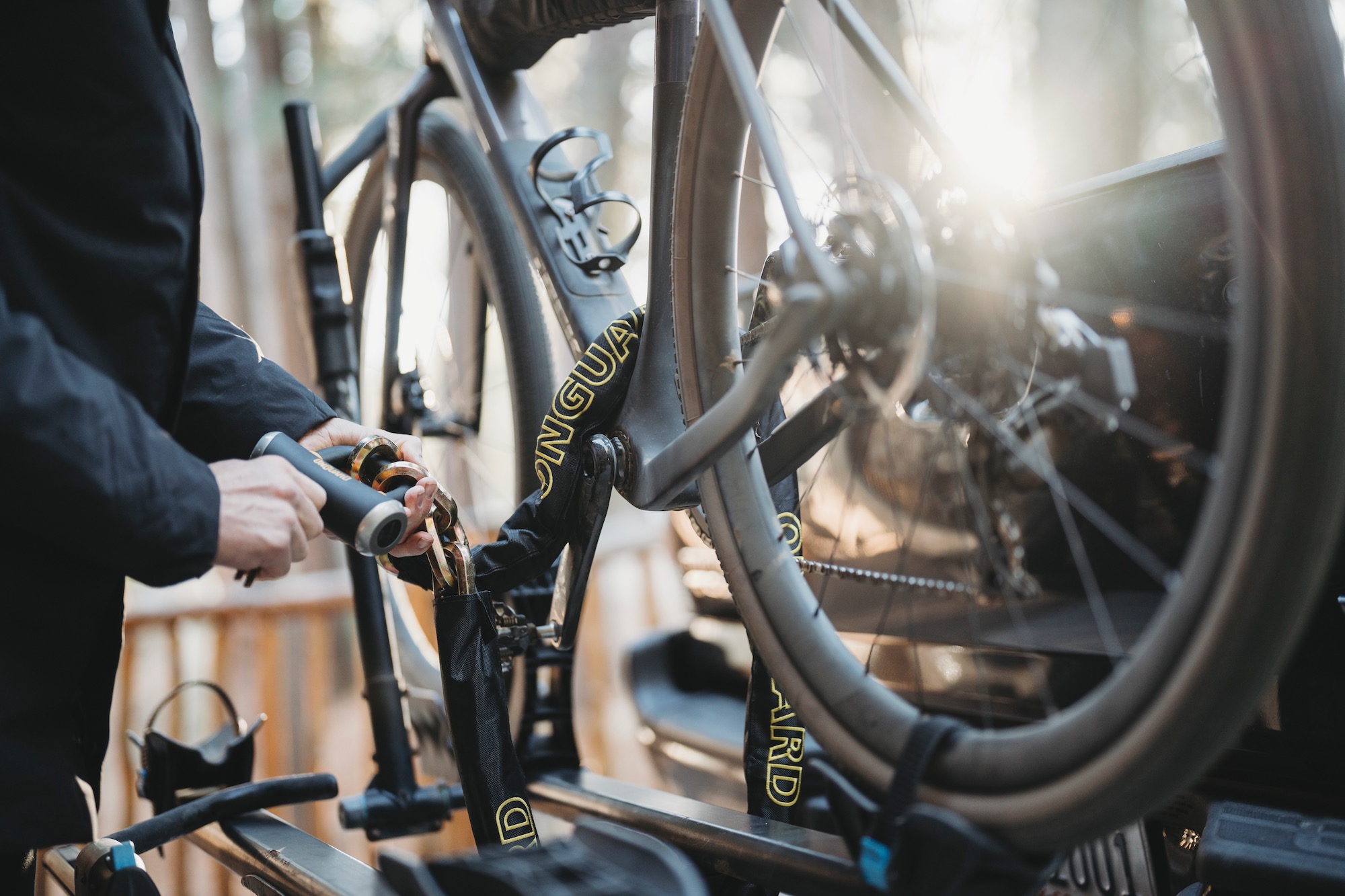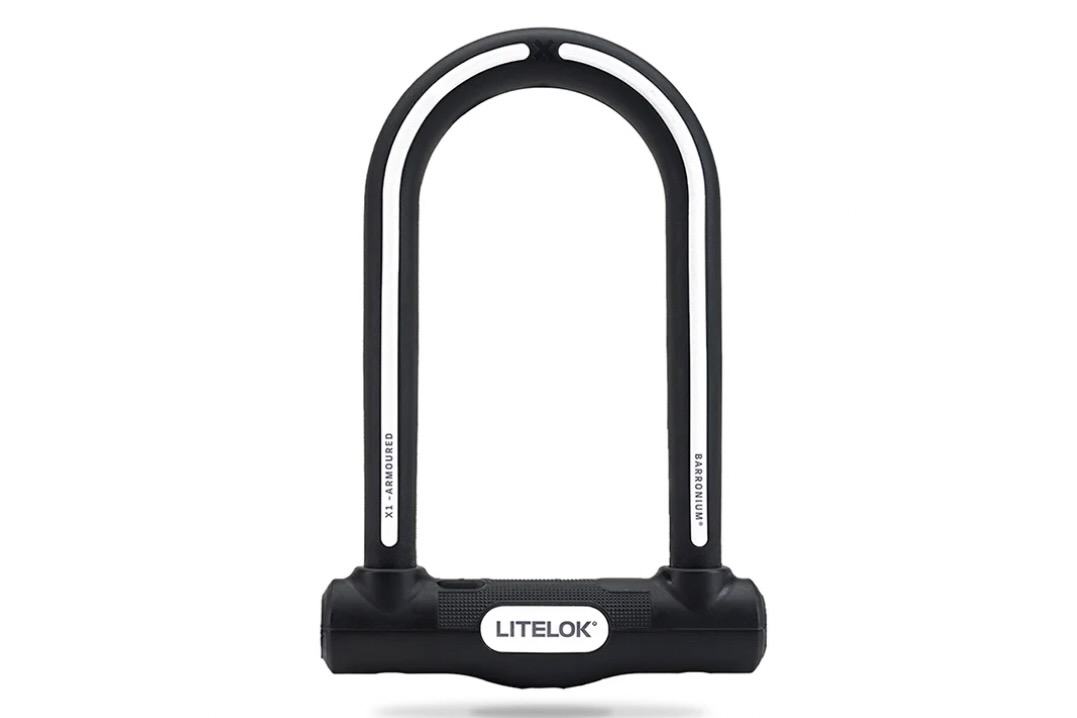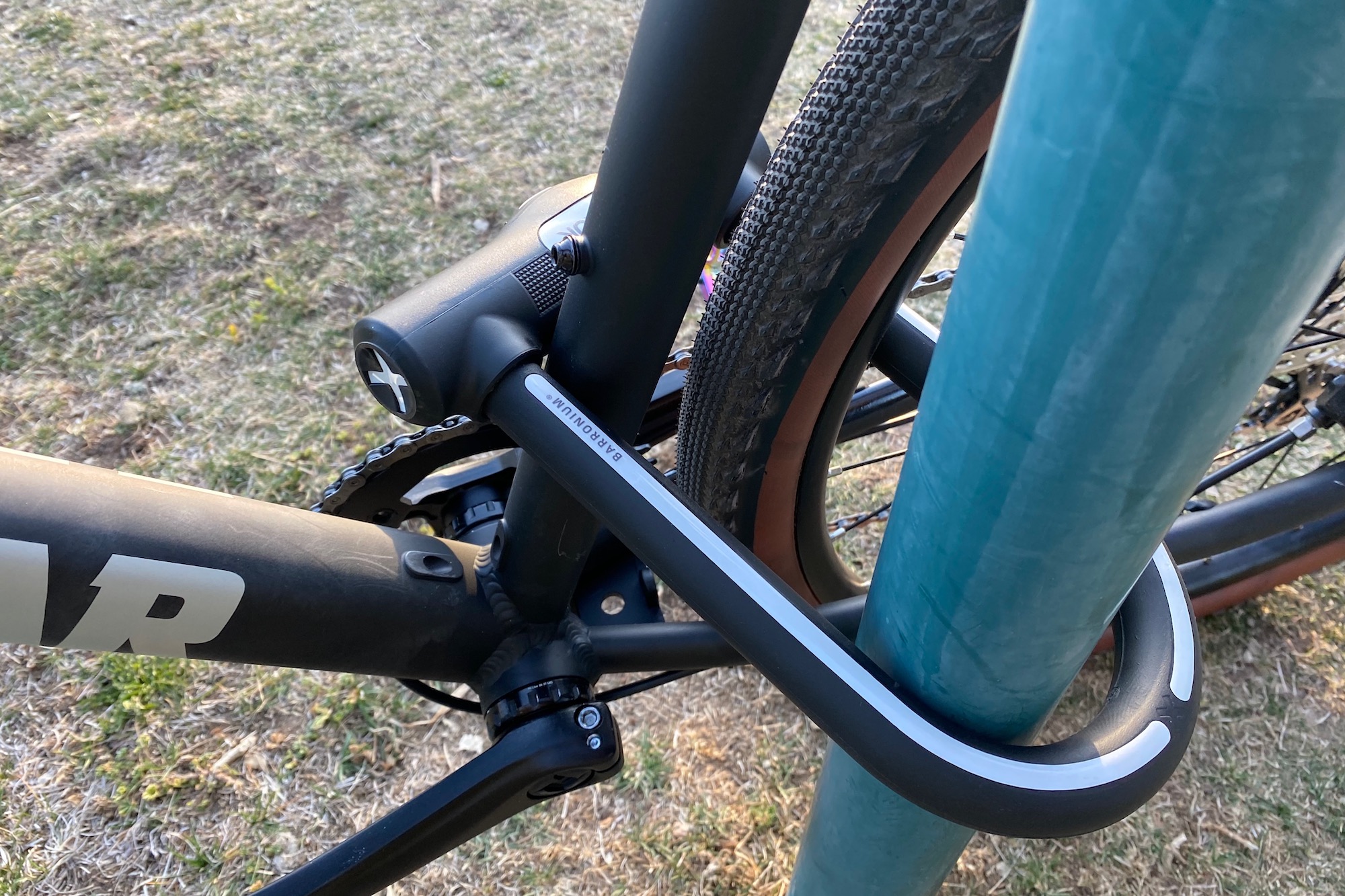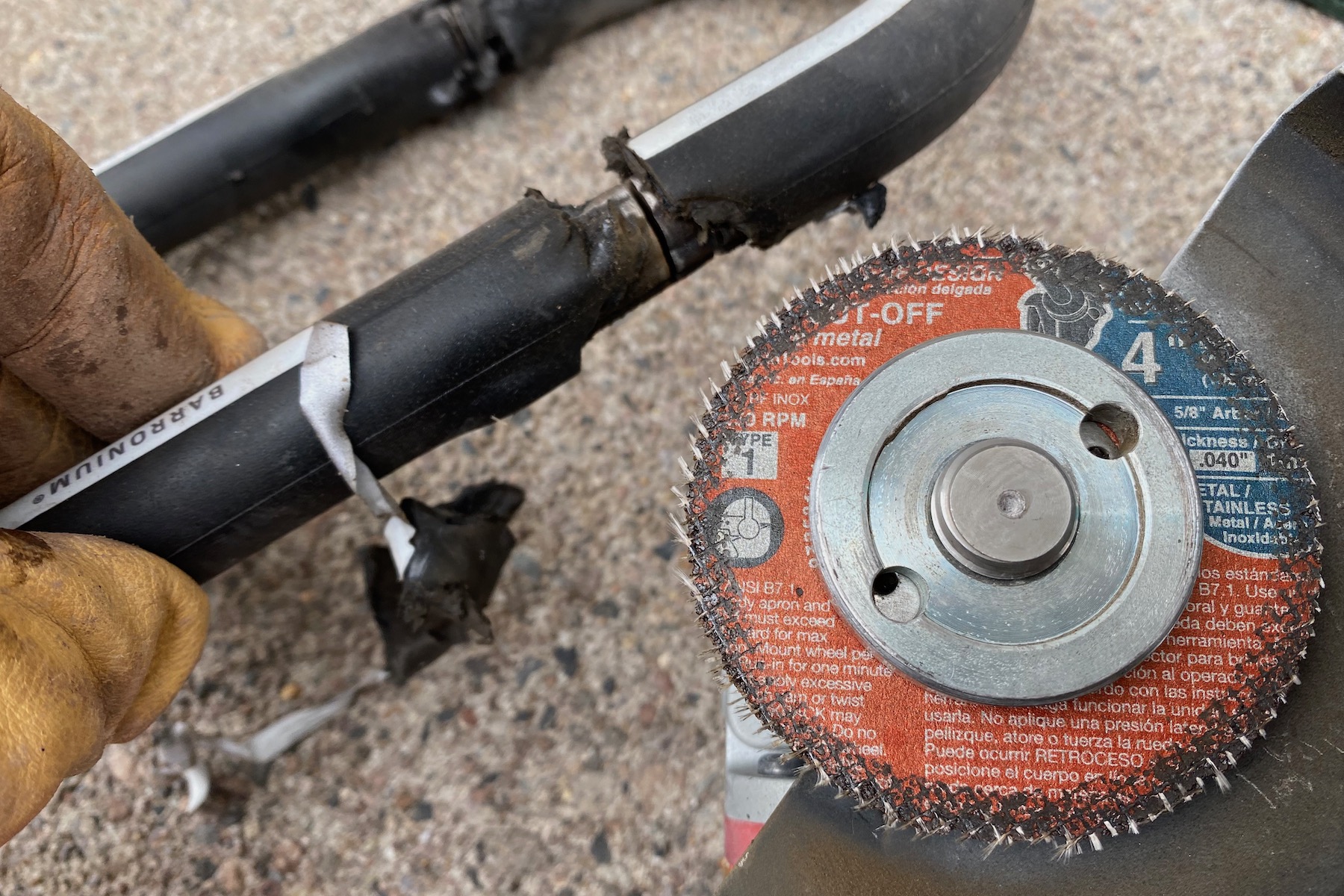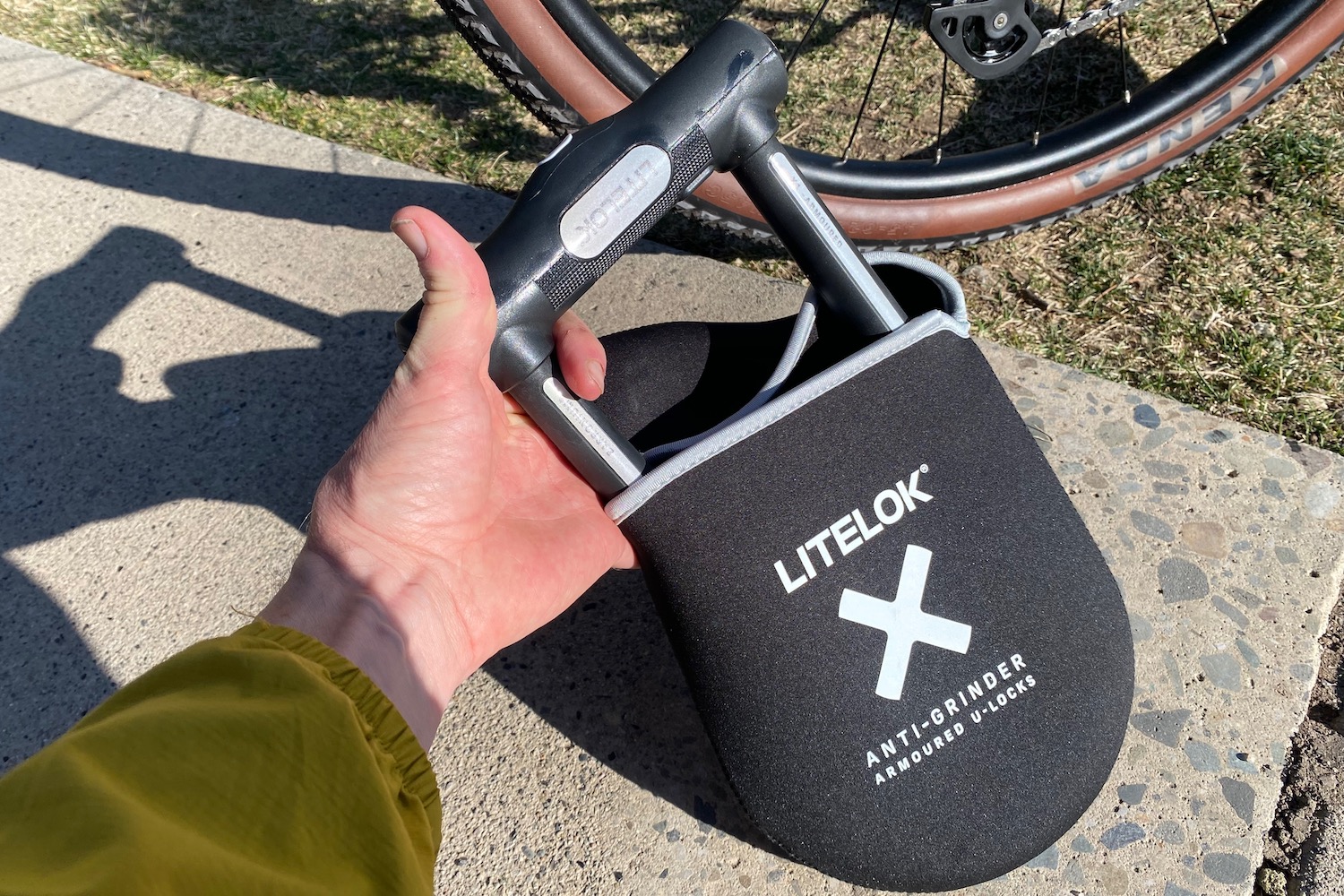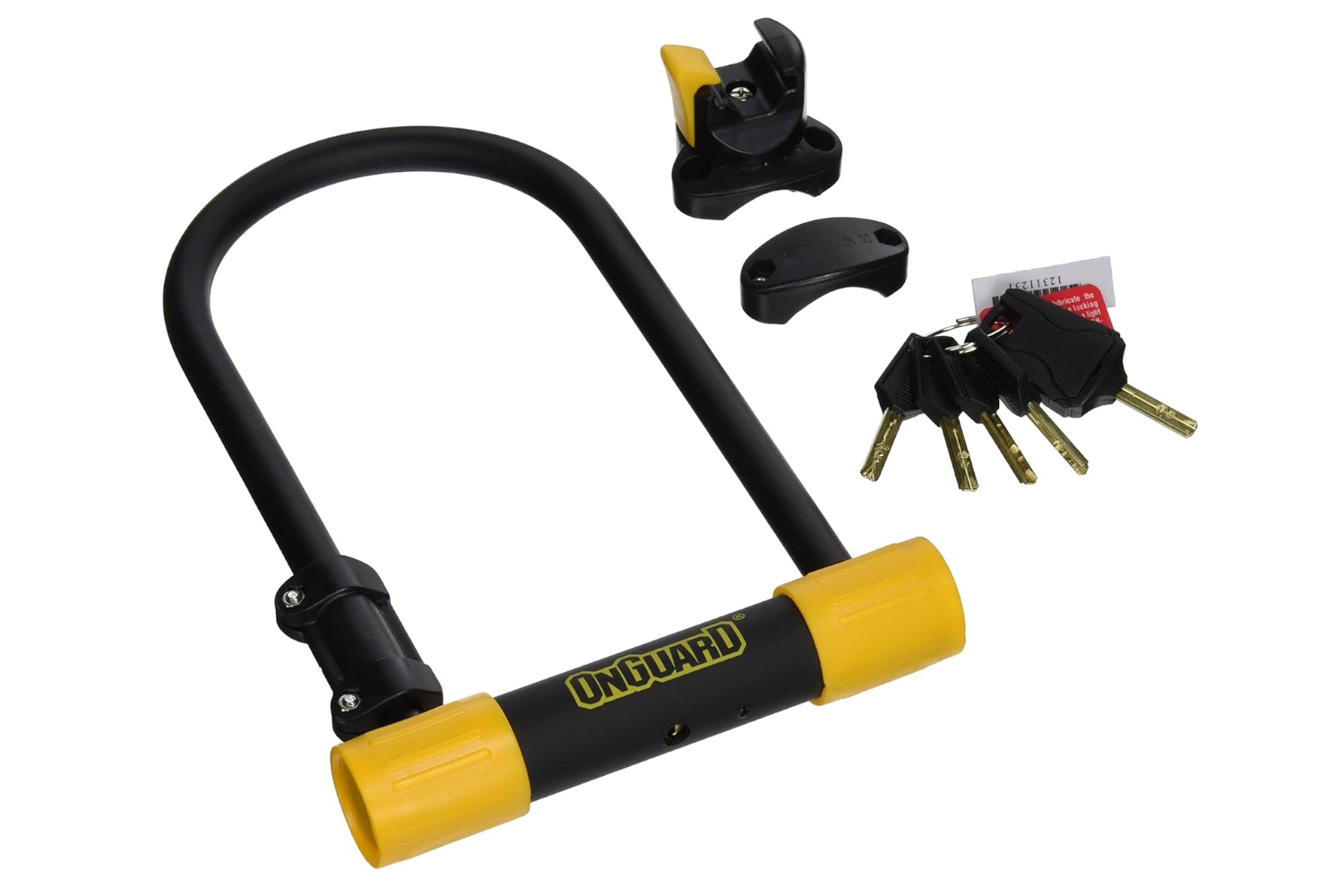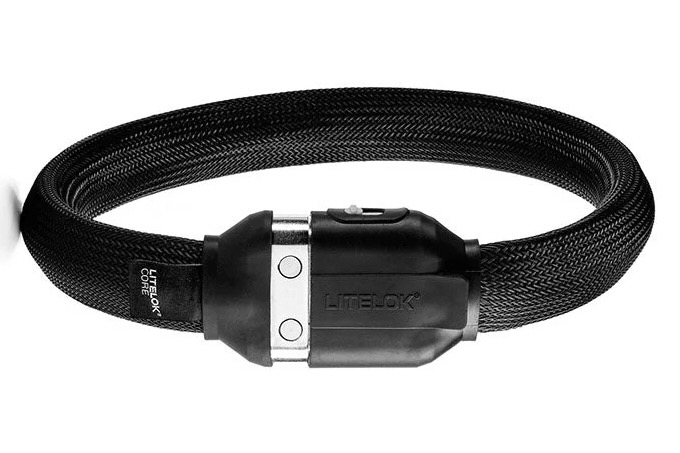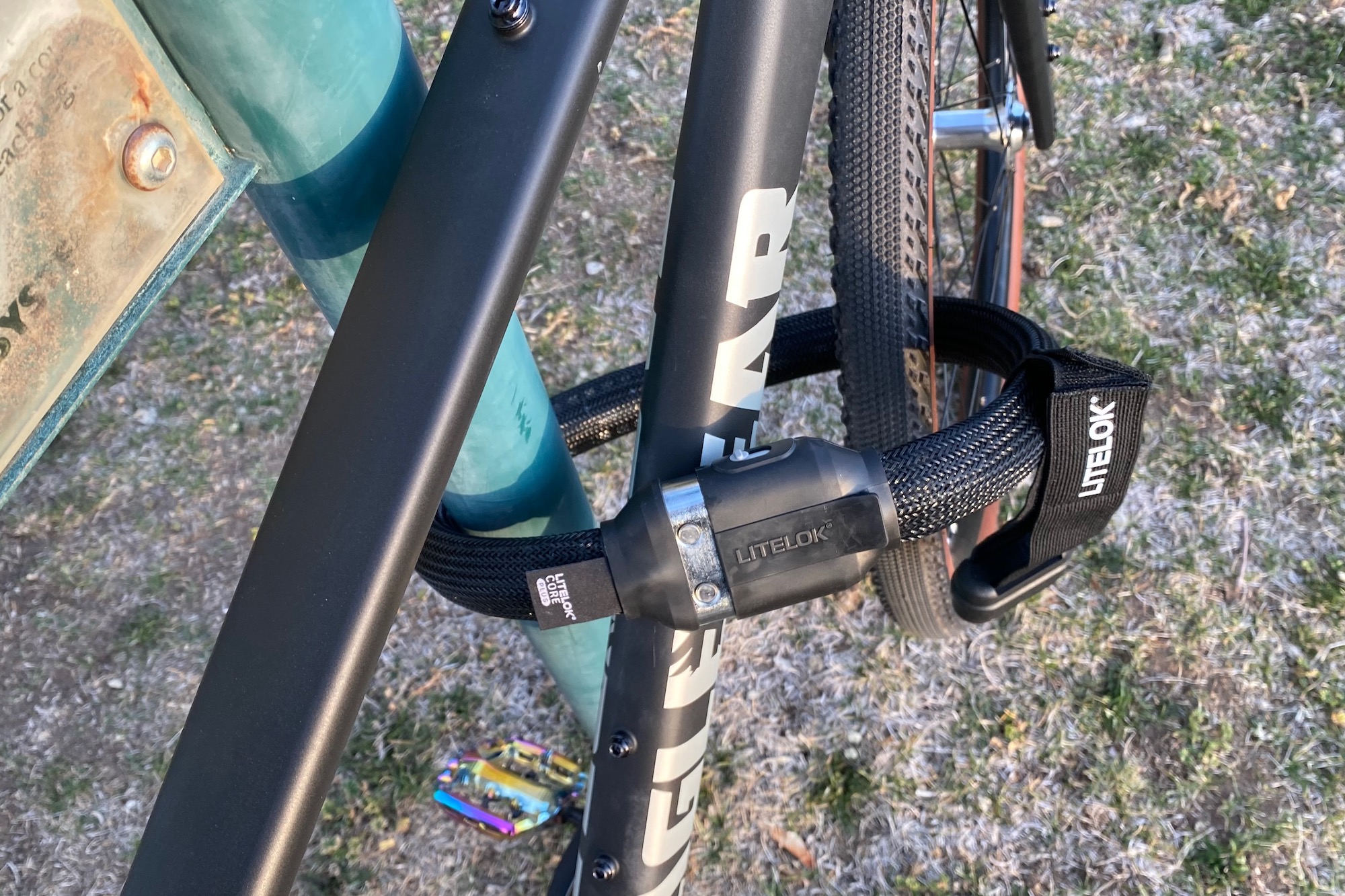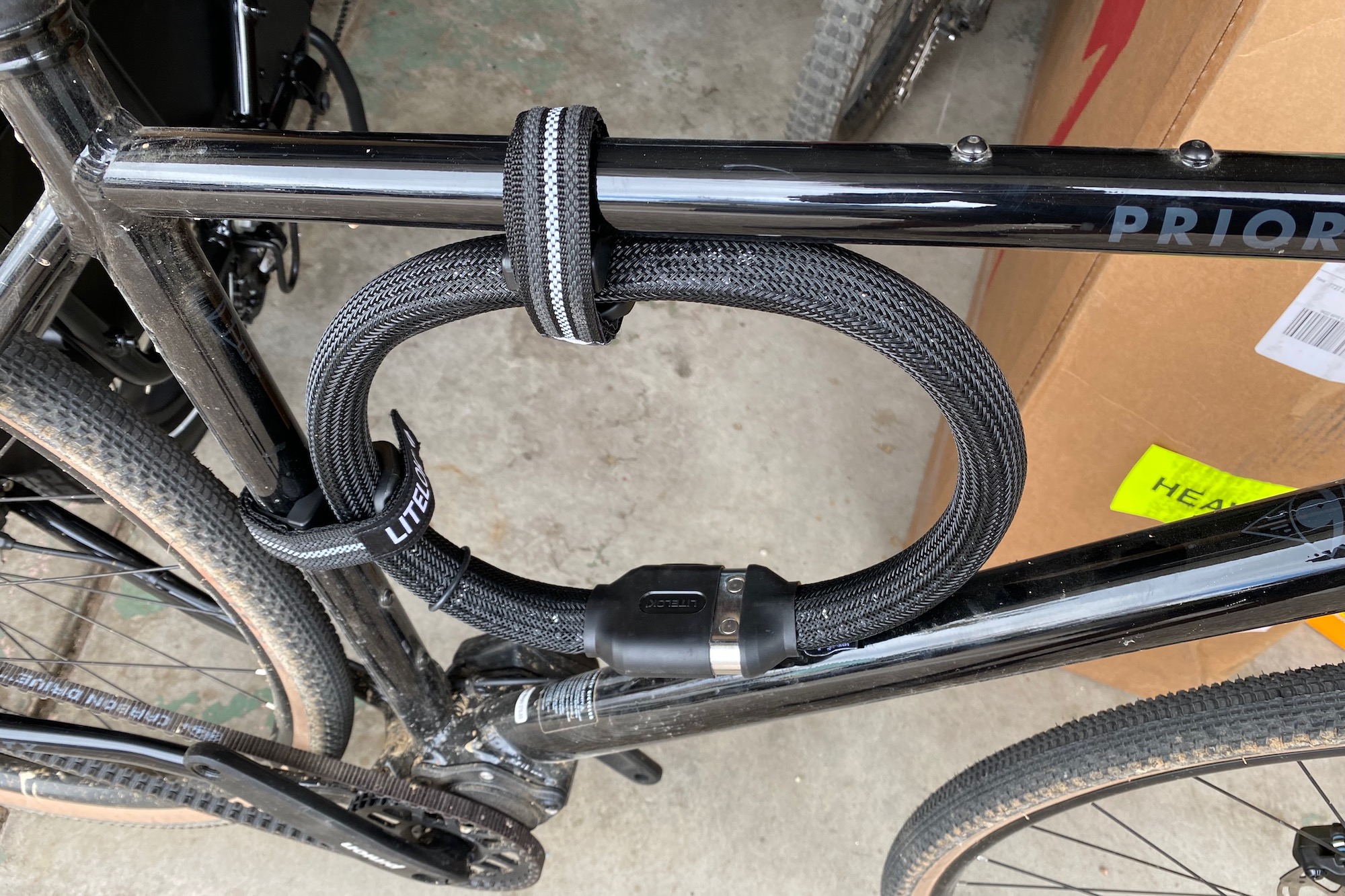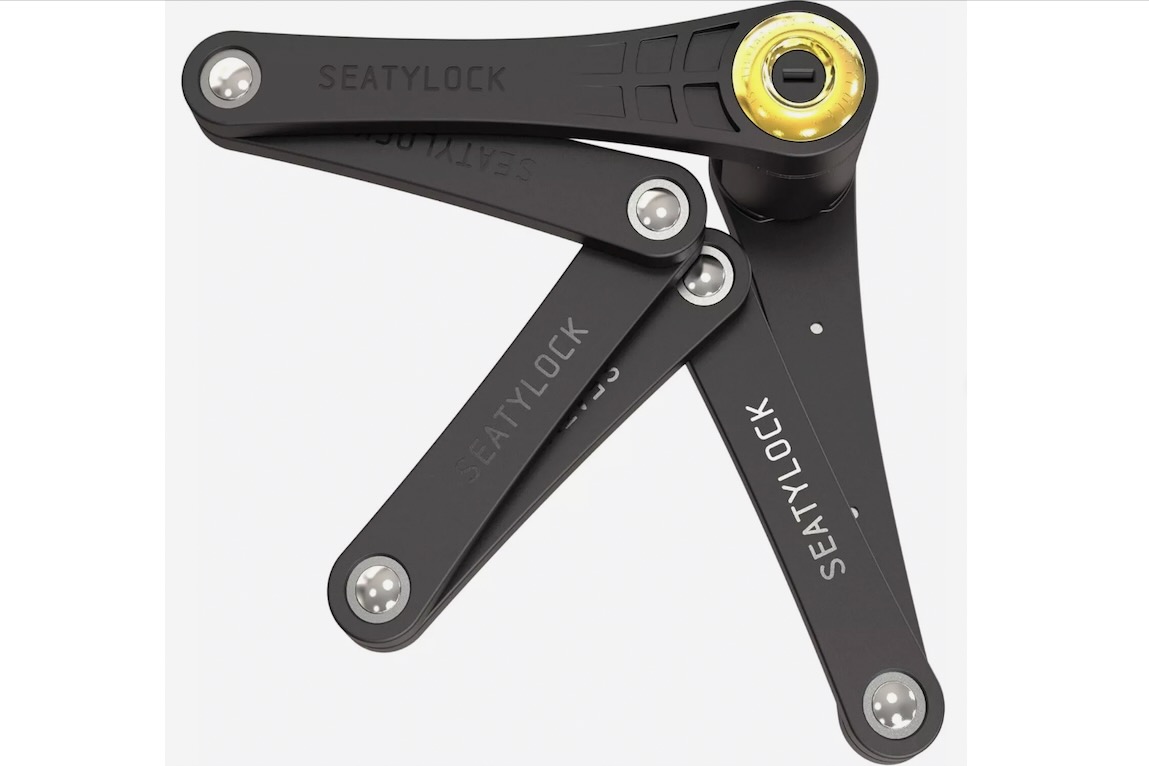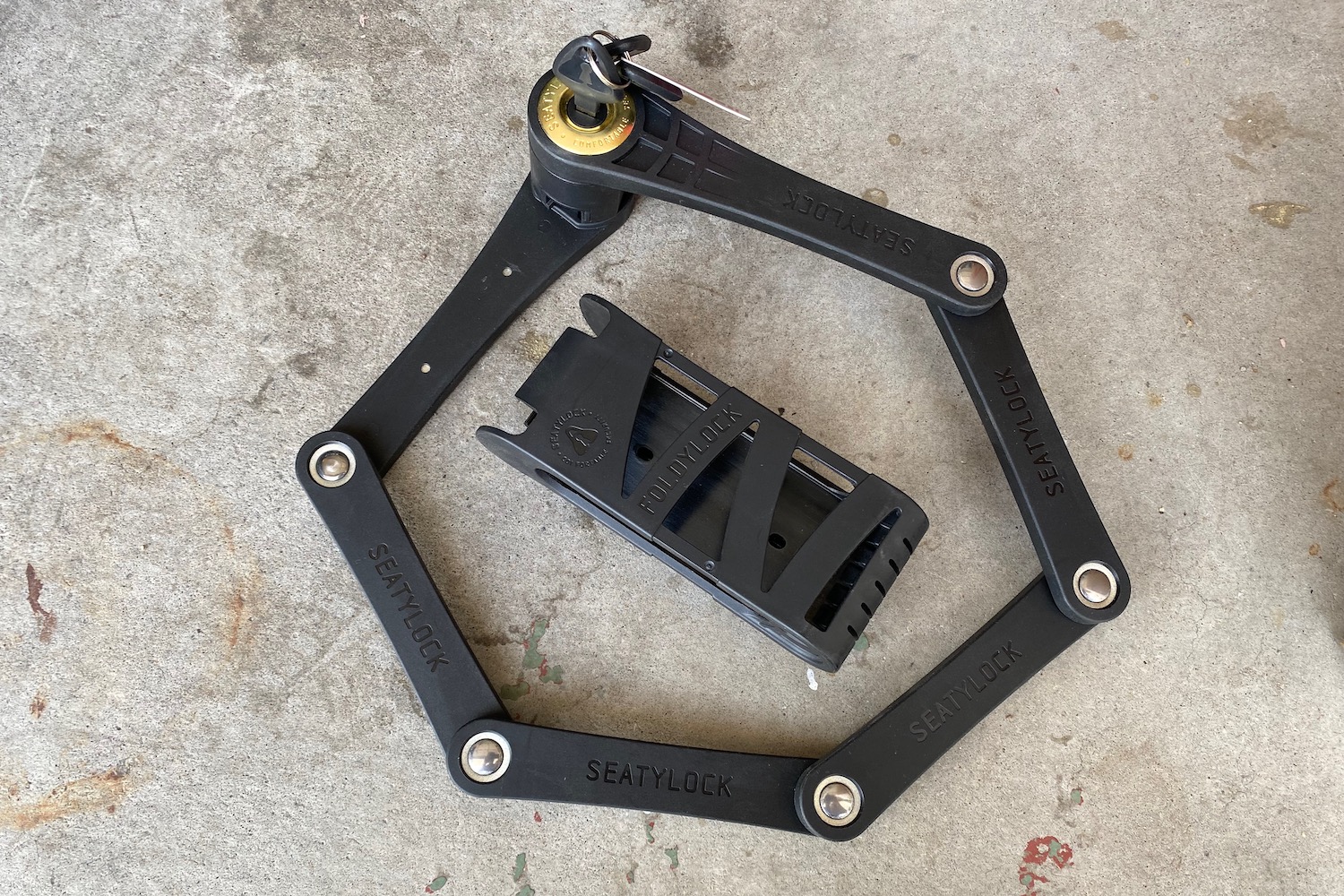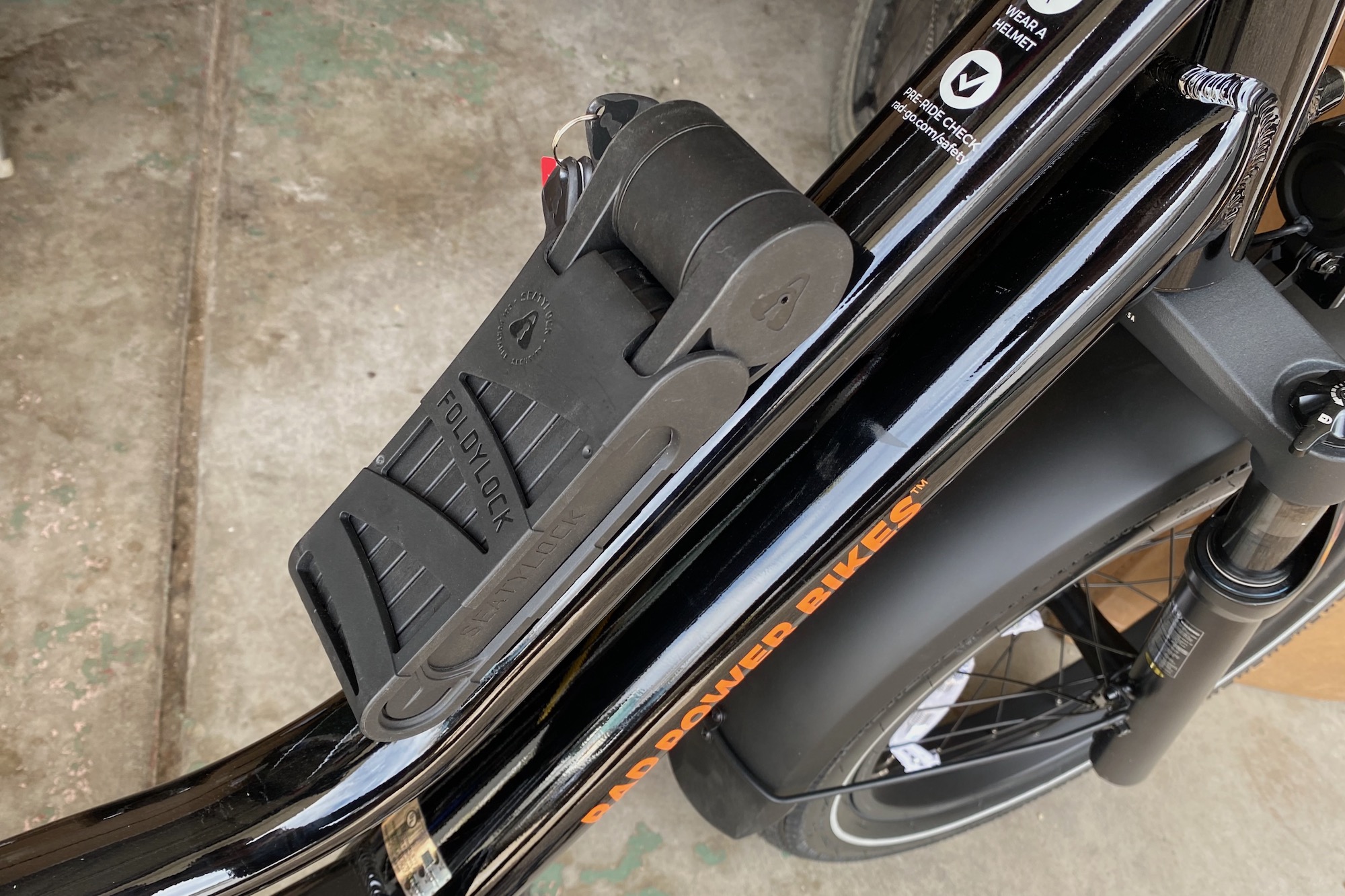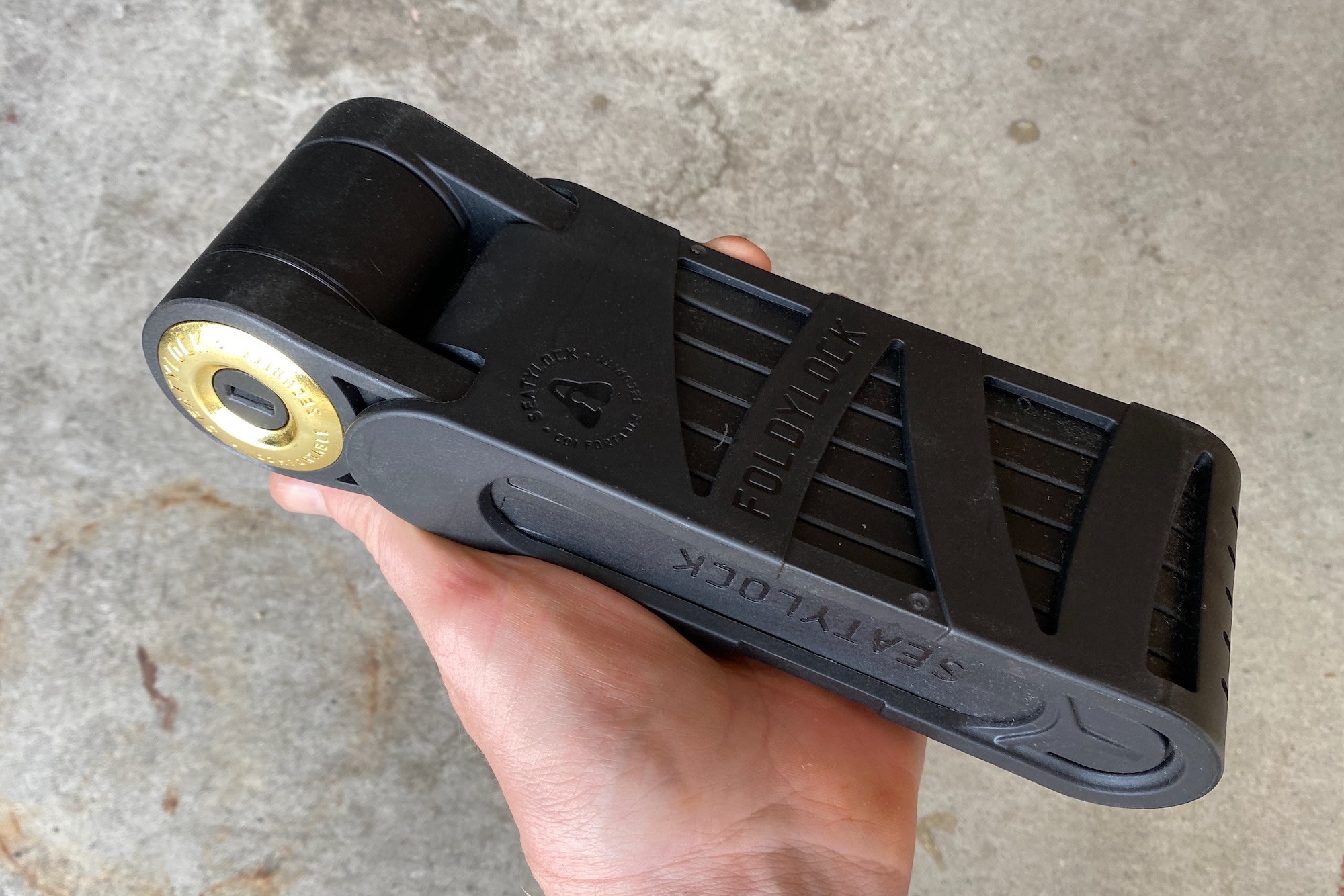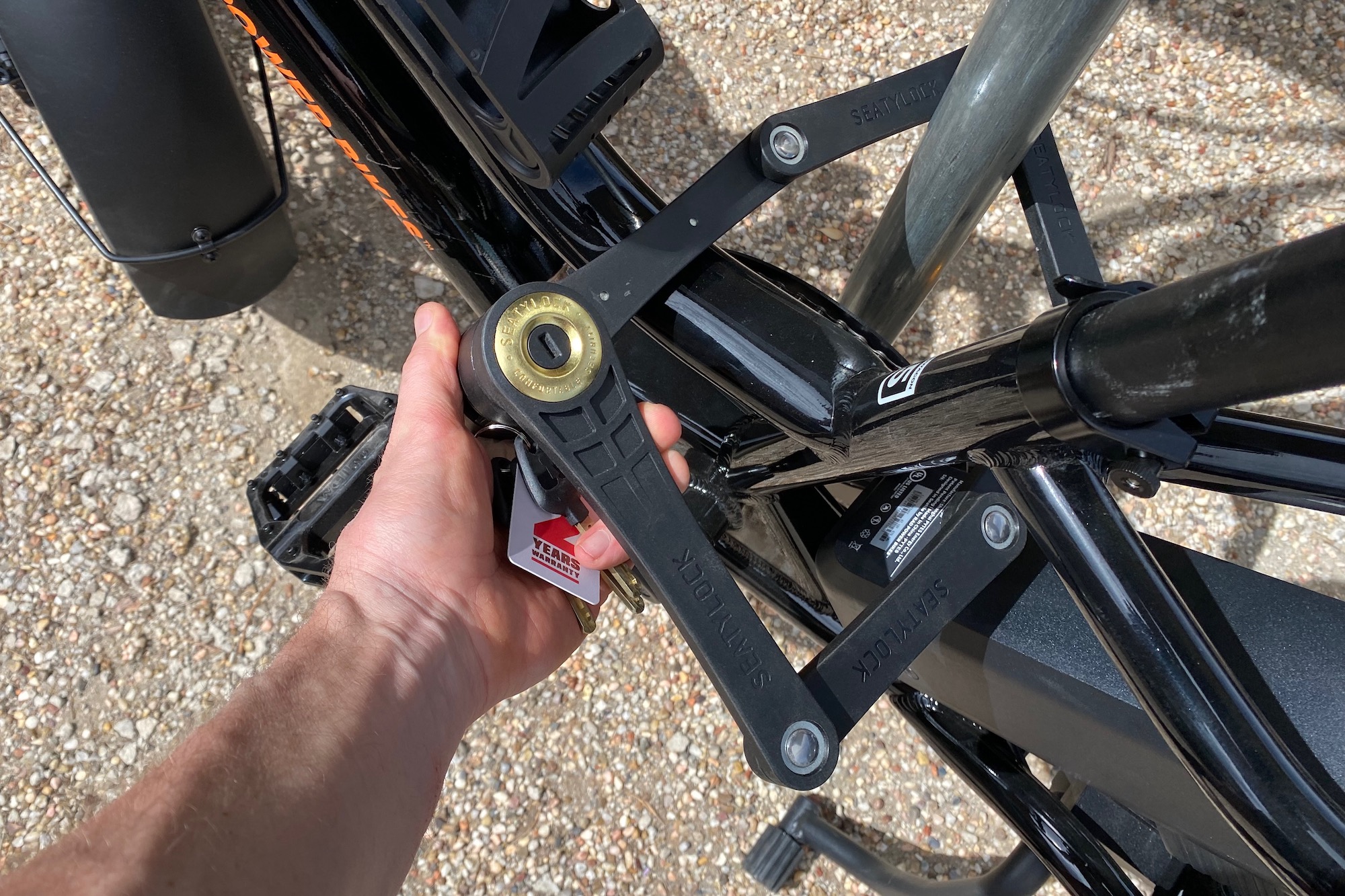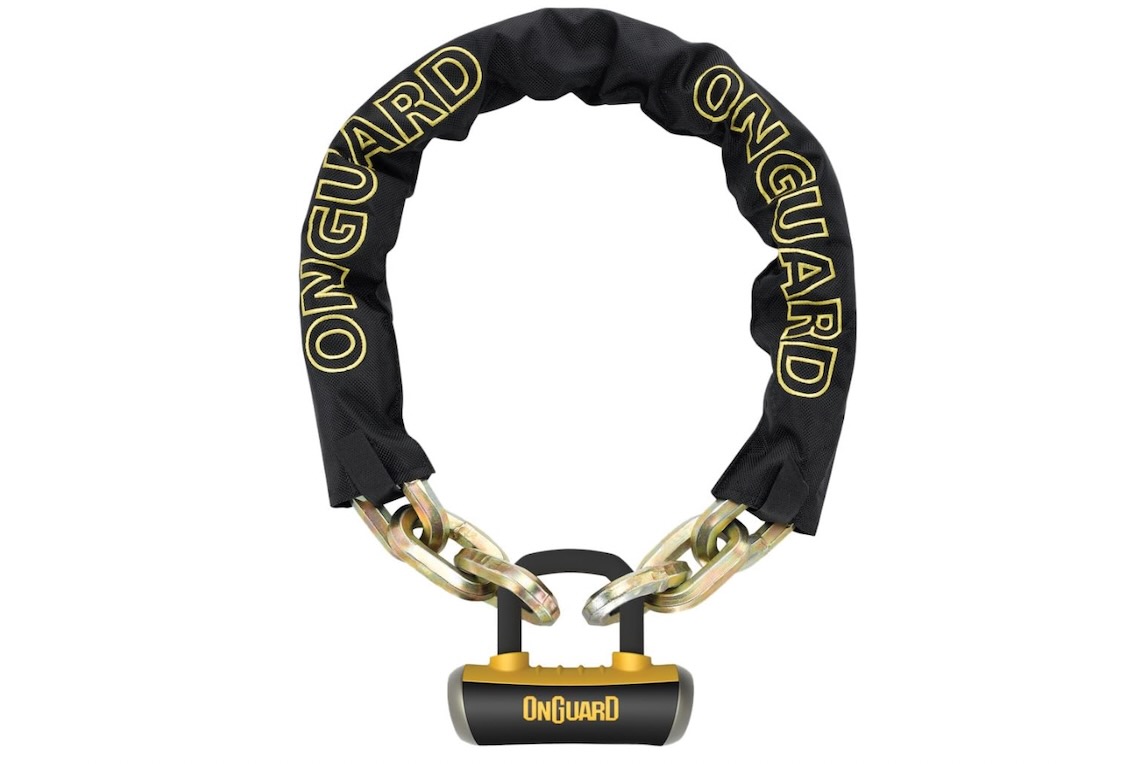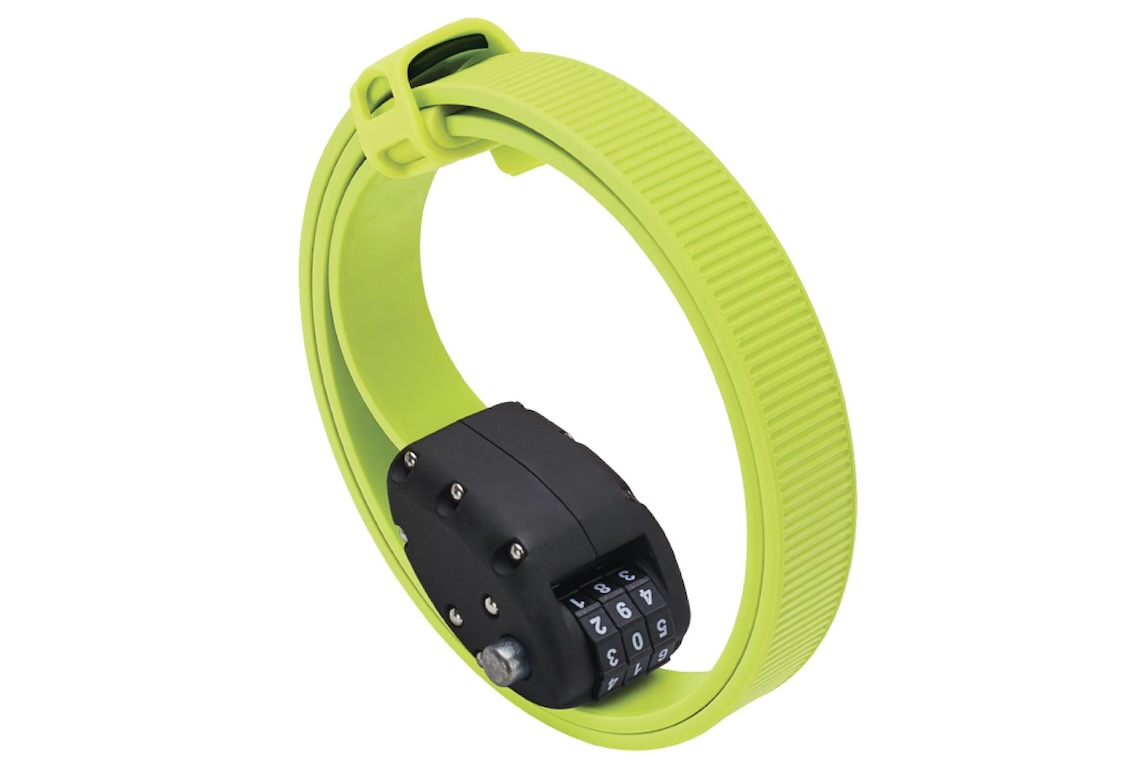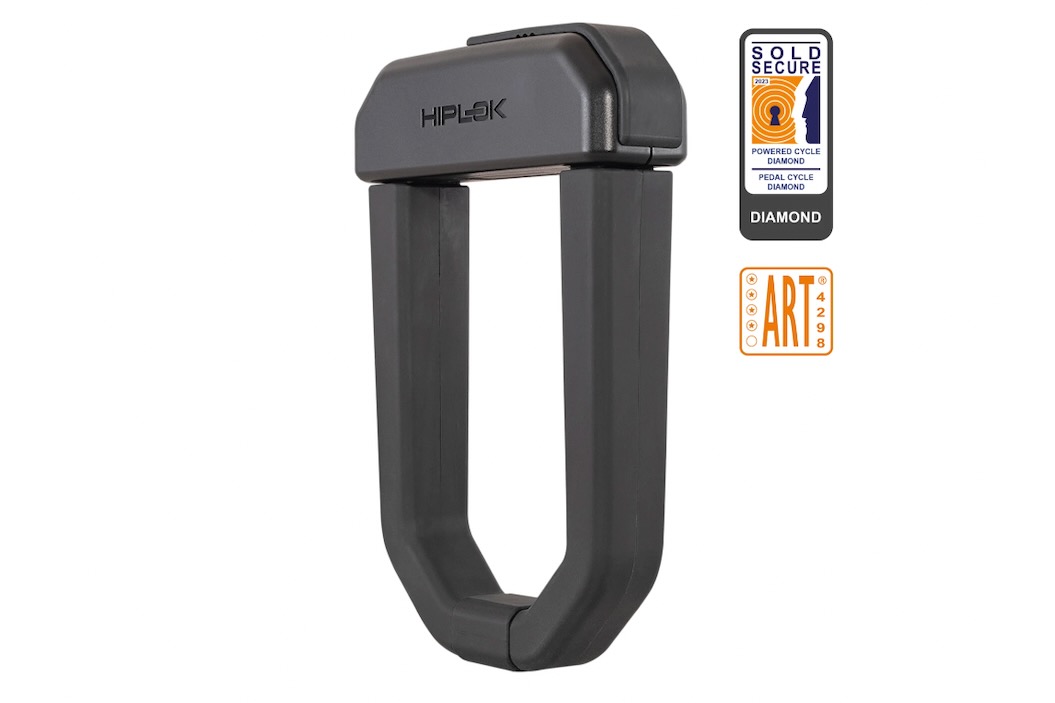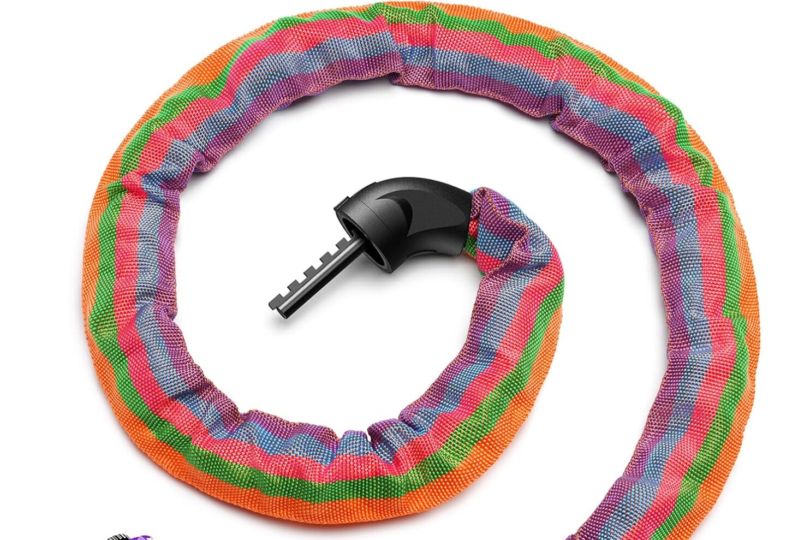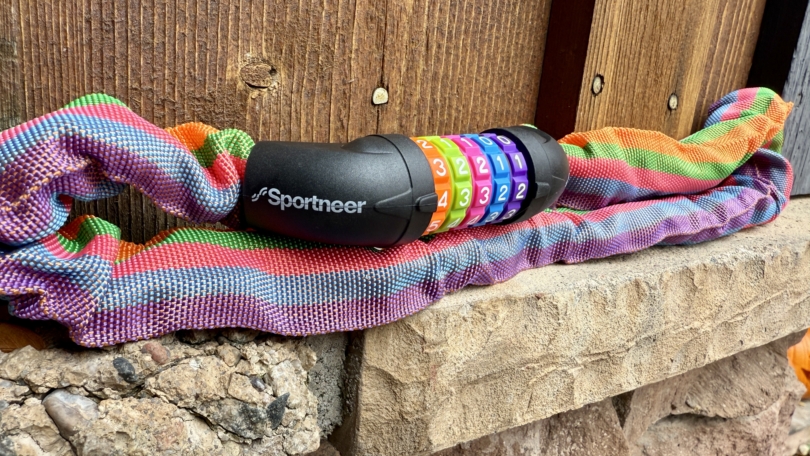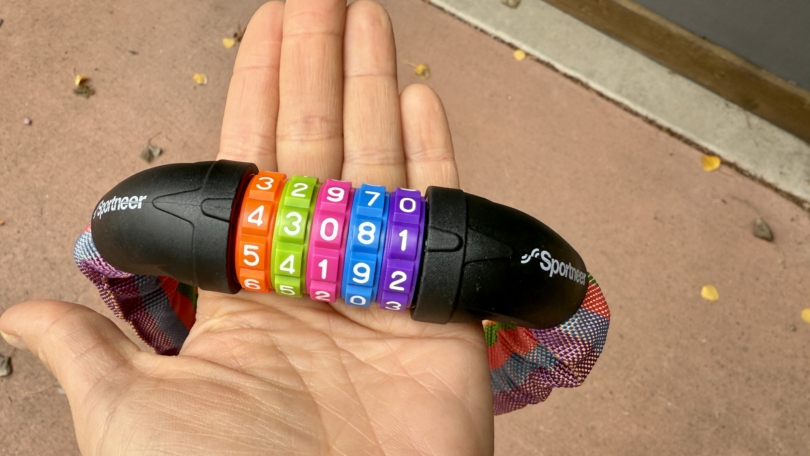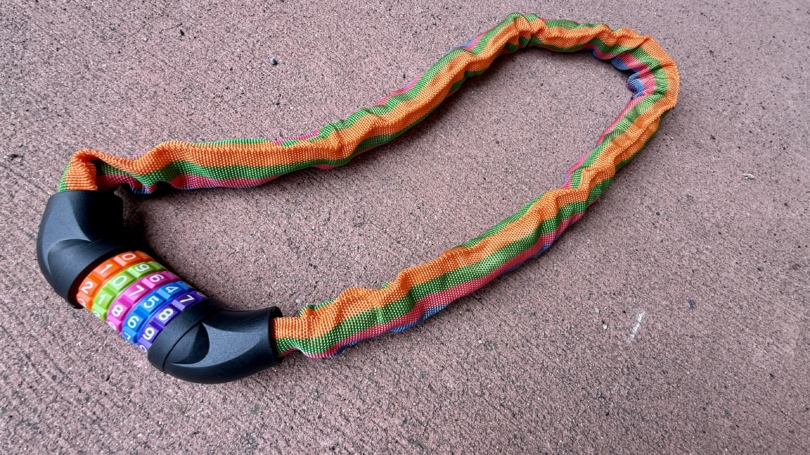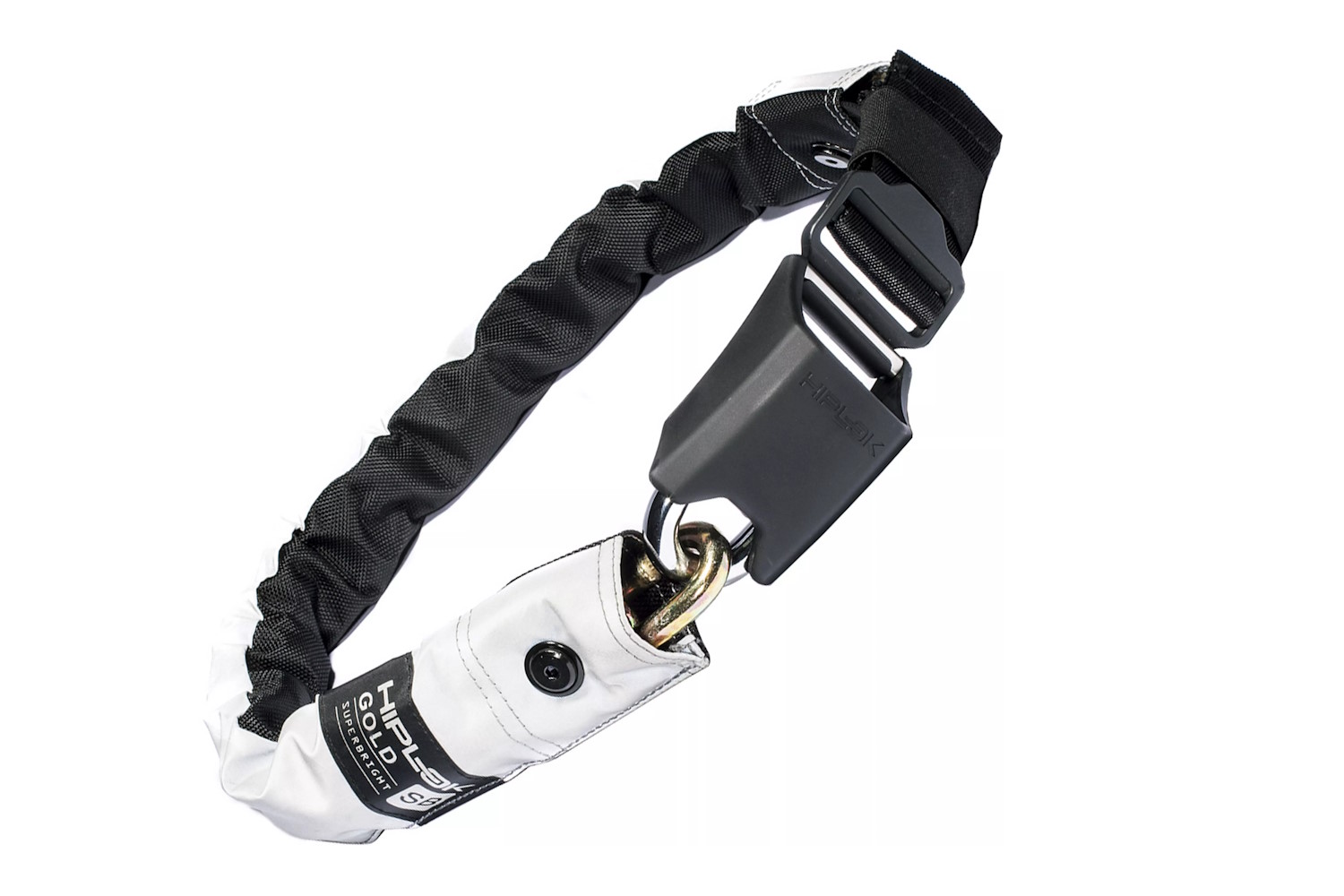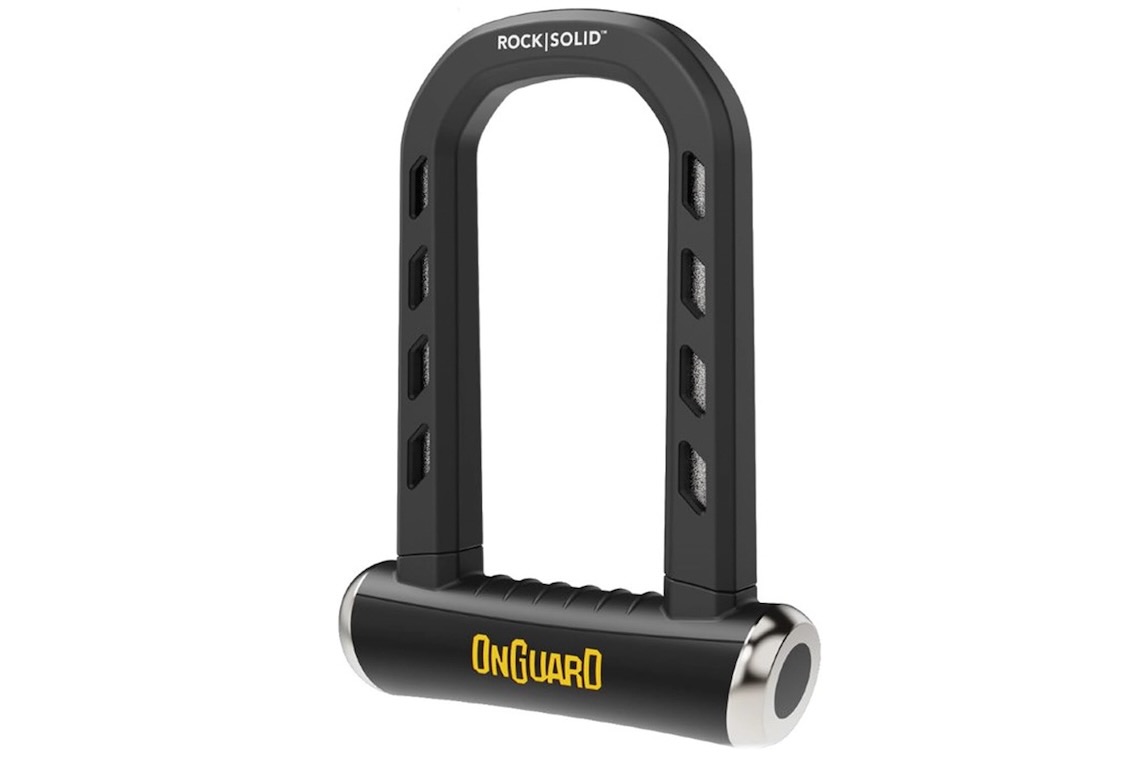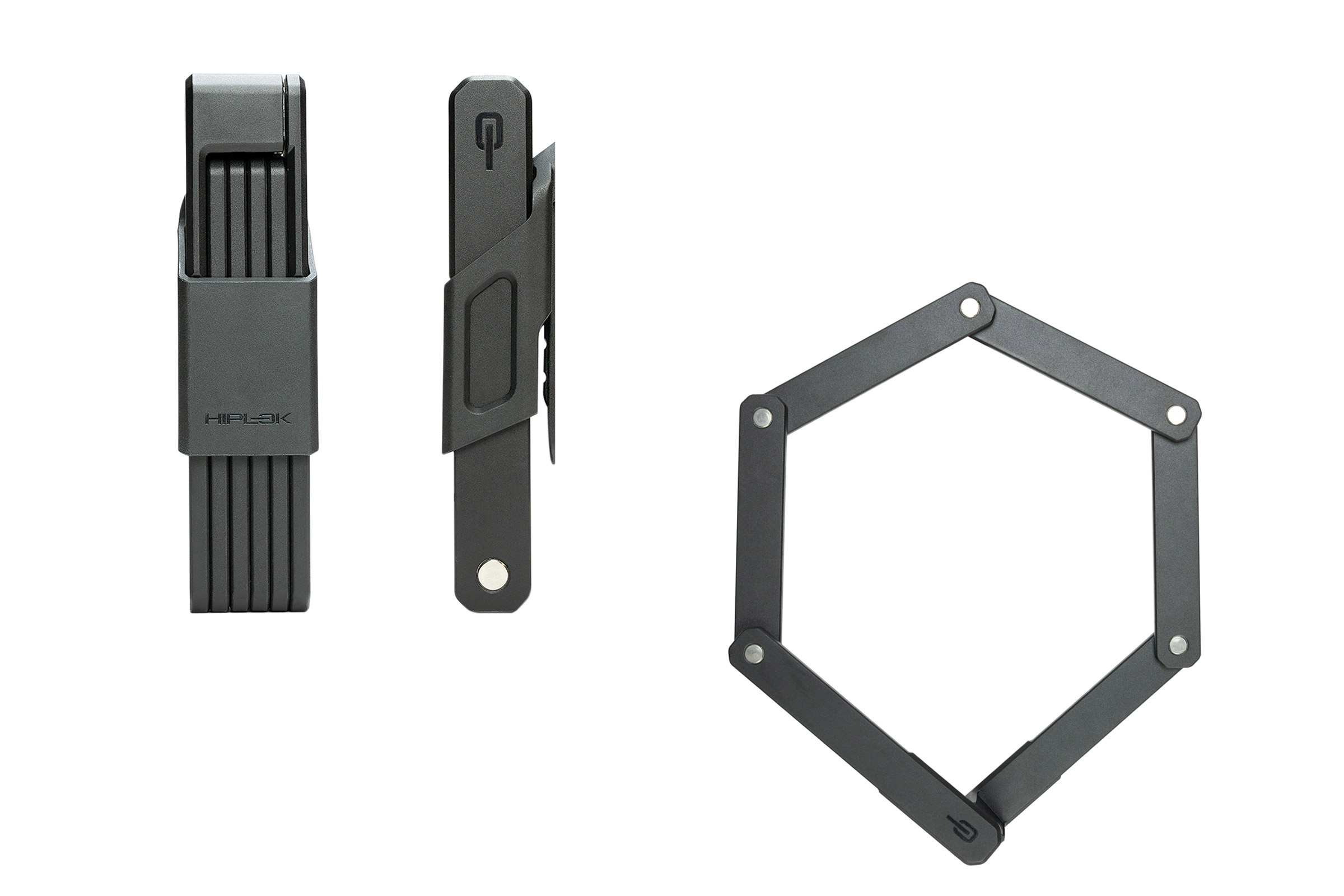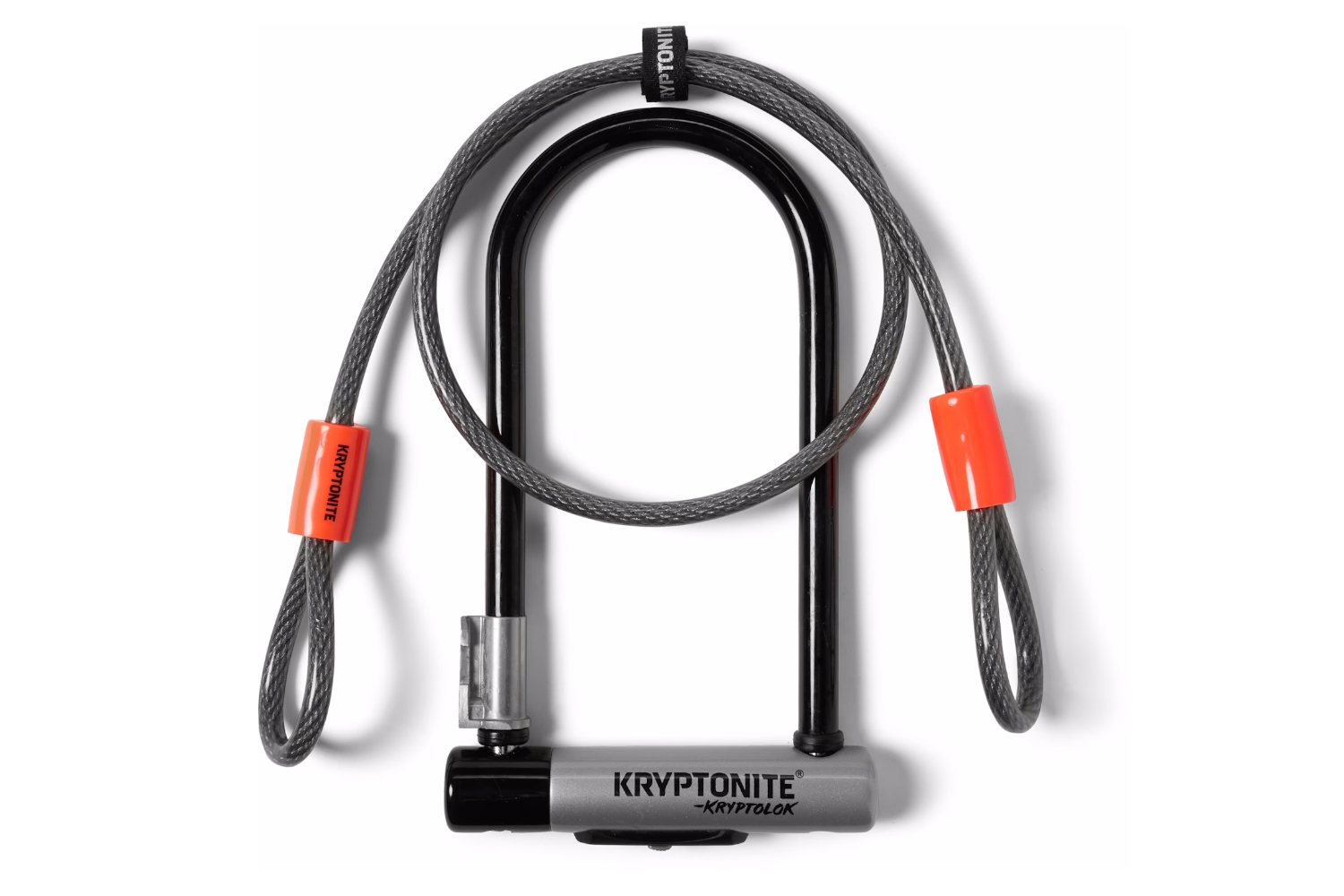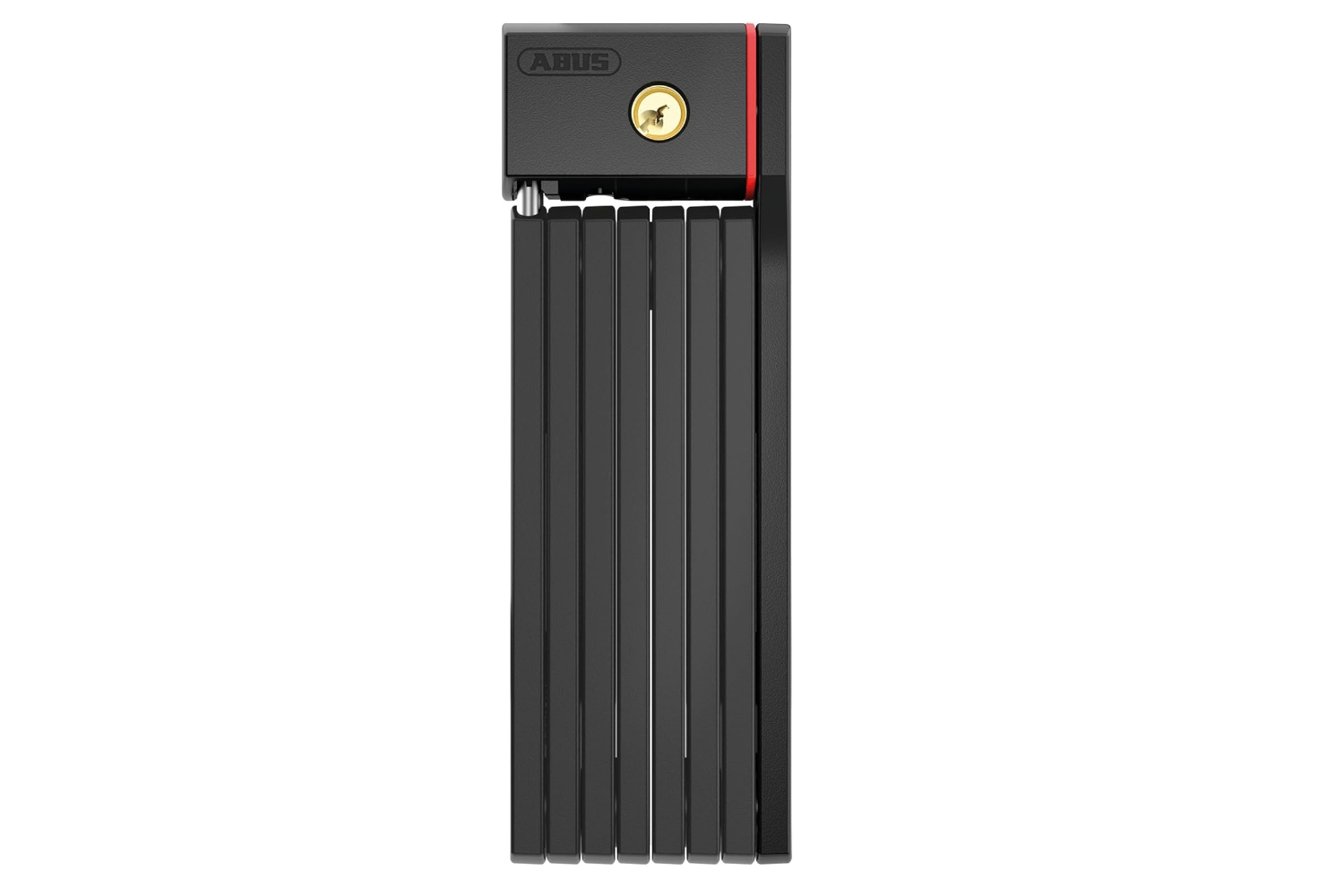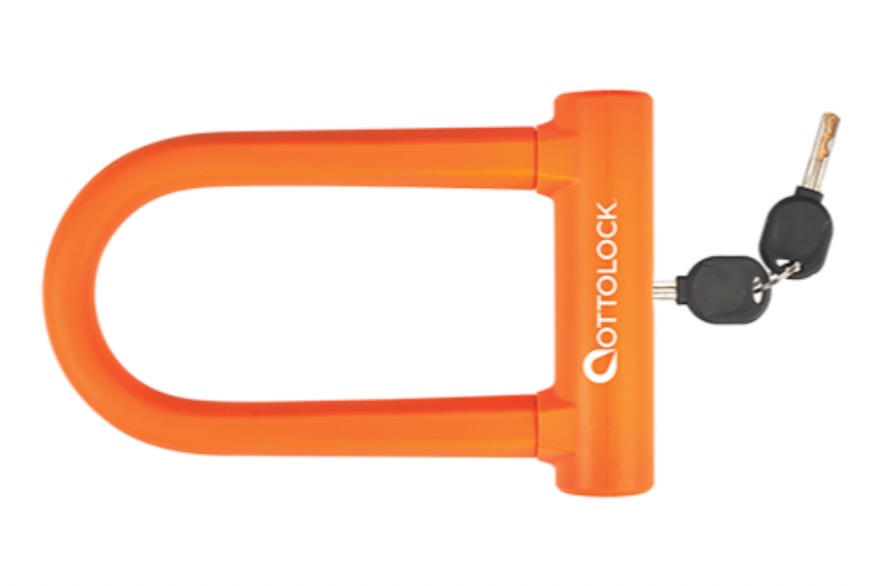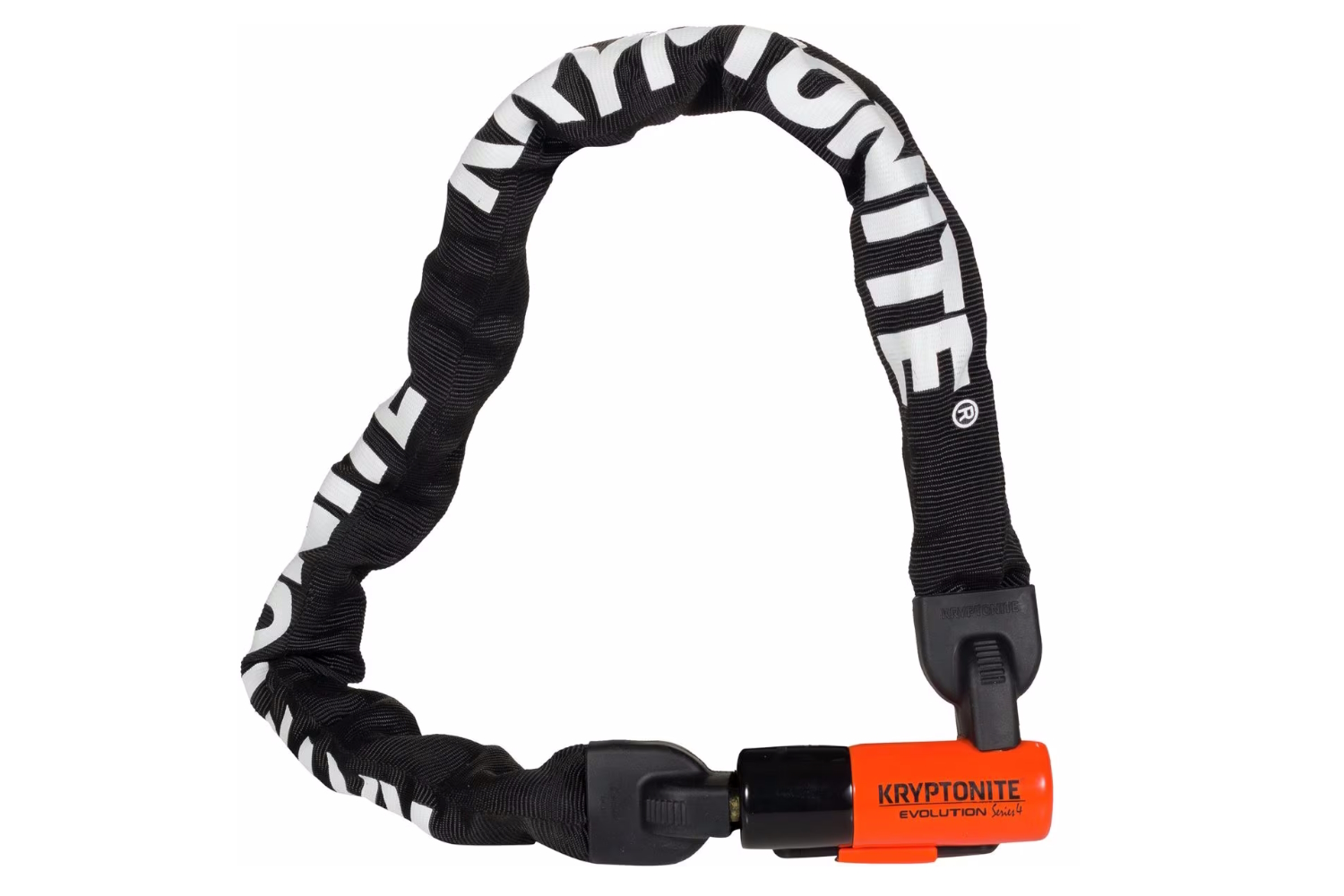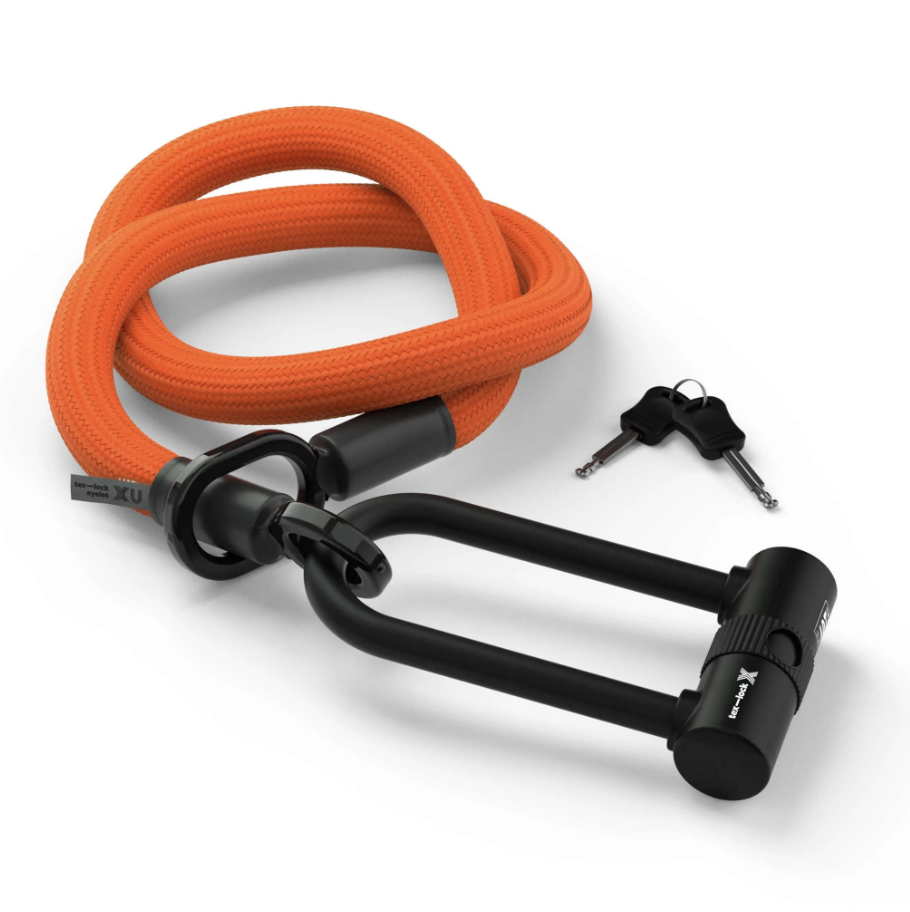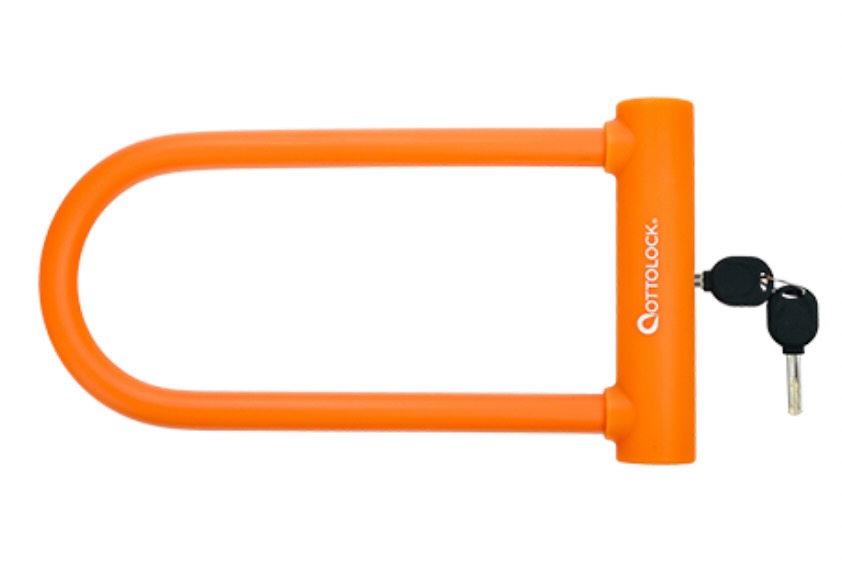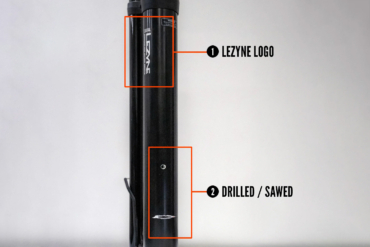Bike theft is a rampant problem, but a quality bike lock can deter or thwart even the most determined bike thief. With dismal statistics surrounding bike theft, having the best bike lock is imperative to keep your precious ride(s) safe.
Fortunately, there are many great bike locks on the market that fit a variety of security needs and budgets. We carefully tested and evaluated each of the locks in this guide to find the best options for every rider and bike theft risk scenario.
From the innovative, wearable LITELOK Core Plus or the folding Foldylock Forever to the super portable Ottolock Original Cinch Lock and everything in between, we’ve got recommendations to suit your bike security needs.
Editor’s Note: After a summer of biking, we updated this guide on October 28, 2025, with the addition of the kid-friendly Sportneer Bike Lock. We also added detailed rating metrics to help explain how we tabulated our scores.
The Best Bike Locks of 2025-2026
LITELOK X1
-
Security
8.5
-
Ease of Use
9.0
-
Portability
8.5
-
Durability
9.0
- Lock style: U-Lock
- Lock type: Key (2 included)
- Security level: Very high
- Sold Secure rating: Diamond
- Dimensions: 3.97" X 7.7" (101 x 197 mm)
- Thickness: 21 mm (incl. rubber coating)
- Weight: 1,678 g (3.7 lbs.)
Pros
- Good sized locking area – for a U-lock
- More affordable than other angle grinder resistant locks
- Takes at least 4 minutes to cut with an angle grinder
- Requires at least 2 cutoff wheels to cut with an angle grinder
- Super-smooth key action
Cons
- Only comes with 2 keys
- There are tougher locks available
OnGuard Bulldog STD U-Lock
-
Security
7.0
-
Ease of Use
8.0
-
Portability
8.0
-
Durability
7.0
- Lock style: U-Lock
- Lock type: Key
- Security level: Medium
- Sold Secure rating: Silver
- Dimensions: 9 in. x 4.5 in.
- Thickness: 11 mm
- Weight: 1,134 g (2.5 lbs.)
Pros
- Good value
- Good theft insurance
- Comes with frame mount bracket
- Comes with 5 keys
Cons
- Not the highest security
LITELOK Core Plus
-
Security
9.0
-
Ease of Use
8.0
-
Portability
8.0
-
Durability
9.0
- Lock style: Wearable
- Lock type: Key
- Security level: Very high
- Sold Secure rating: Diamond
- Dimensions: 75cm long loop
- Thickness: 25 mm
- Weight: 4.1 lbs.
Pros
- Diamond rated by Sold Secure
- Larger locking area than U-locks
- Wearable design fits around the waist
- Comes with frame mounts
- Comes in 75 or 100cm sizes
Cons
- "Click to Lock" feature can cause issues — don't forget your key
- Not super-flexible or easy to get through spokes
- Moderately heavy
- Somewhat expensive
Seatylock Foldylock Forever
-
Security
8.5
-
Ease of Use
8.0
-
Portability
8.0
-
Durability
8.5
- Lock style: Folding
- Lock type: Key
- Security level: High
- Sold Secure rating: Gold
- Dimensions: 90 cm long (35.4 in.)
- Thickness: 6.5 mm plates
- Weight: Lock: 1622 g (3.6 lbs.), mount: 128 g, total: 1,750 g (3.85 lbs.)
Pros
- Gold-level Sold Secure rating
- Relatively large locking area
- Very resistant to common attacks
- Great frame mount
Cons
- Moderately heavy
- Can be cut with an angle grinder
OnGuard Beast 8016L Chain Lock
-
Security
8.5
-
Ease of Use
7.5
-
Portability
7.5
-
Durability
8.0
- Lock style: Chain
- Lock type: Key
- Security level: Very high
- Sold Secure rating: Not rated
- Dimensions: 6 foot chain length
- Thickness: 14 mm diameter chain links
- Weight: 8,800 g (19.4 lbs.)
Pros
- Super secure
- 6-foot length is long enough to lock 2 bikes on a car rack
- Comes with 5 keys
- $5K anti-theft guarantee
Cons
- Expensive
- Very heavy – not easily portable
- Not the smoothest key action
Ottolock Original Cinch Lock
-
Security
5.5
-
Ease of Use
8.5
-
Portability
8.5
-
Durability
5.0
- Lock style: Strap
- Lock type: Combo
- Security level: Low
- Sold Secure rating: Not rated
- Length: 18 in., 30 in. (tested), 60in.
- Thickness: 3 mm
- Weight: 177 g or 6.2 oz. (30")
Pros
- Very easily portable
- Quick and easy to use
- Comes in 3 lengths
- Useful for applications other than bikes
Cons
- Not good for high security applications
Hiplok D1000
-
Security
9.0
-
Ease of Use
8.5
-
Portability
8.0
-
Durability
9.0
- Lock style: U-Lock
- Lock type: Key
- Security level: Very high
- Sold Secure rating: Diamond
- Dimensions: 6.1 in. x 3.6 in.
- Thickness: 20 mm
- Weight: 1,360 g (4 lbs.)
Pros
- Sold Secure Diamond rating
- Very hard to compromise
- Rubber coating is safe for bike frames
- Lifetime warranty
Cons
- Very expensive
- Kinda heavy
- Rattles a bit in transport
Behind the Breakaway Pack
The following bike locks didn’t make our top picks, but they’re still very much worth a look.
-
Security
5.5
-
Ease of Use
9.0
-
Portability
8.5
-
Durability
7.0
- Lock style: Chain lock
- Lock type: 5-digit resettable combination
- Security level: Low
- Sold Secure rating: Not rated
- Dimensions: Approx. 3.2 ft length chain
- Thickness: 6 mm
- Weight: Approx. 1.48 lbs
Pros
- 5-digit combination is easy for a kids to use without any help
- Light enough to be carried in a backpack
- Relatively affordable compared to other locks
Cons
- Limited security; it's only suitable for low-risk areas
-
Security
9.0
-
Ease of Use
7.5
-
Portability
8.5
-
Durability
8.5
- Lock style: Chain
- Lock type: Key
- Security level: High
- Sold Secure rating: Gold
- Dimensions: 33.5 in. chain length
- Thickness: 10 mm
- Weight: 2,359 g (5.2 lbs.)
Pros
- Super-secure 10 mm chain lock
- Highly visible reflective sheath
- Waist carry option makes it more easily portable
Cons
- Shorter length limits locking options
- Fairly expensive
-
Security
9.0
-
Ease of Use
8.5
-
Portability
9.0
-
Durability
9.0
- Lock style: U-Lock
- Lock type: Key
- Security level: Very high
- Sold Secure rating: Diamond
- Dimensions: 3.55 in. x 6.9 in.
- Thickness: 15 mm
- Weight: 1,406 g (3.1 lbs.)
Pros
- Super secure – diamond rating
- Angle grinder resistant
- Rubber coating protects bike finish
- Comes with 5 keys!
- Light for security level
Cons
- Expensive
- Not the smoothest key feel
-
Security
7.0
-
Ease of Use
8.5
-
Portability
8.5
-
Durability
8.0
- Lock style: Folding
- Lock type: Key
- Security level: Low
- Sold Secure rating: Bronze
- Dimensions: 33.5 in. length
- Thickness: 5 mm
- Weight: 1,043 g (2.3 lbs.)
Pros
- Great for quick, low-security lock-ups
- Relatively light
- Wearable – clip allows it to hook onto a belt, bag, or strap
- Versatile and user-friendly mounting system
- 85cm locking length makes it easier to lock to things
- Rattle-free bike mount
Cons
- Bronze-rated security is less robust than other options
- Belt-clip was finicky on really thick belt
-
Security
6.5
-
Ease of Use
8.0
-
Portability
8.0
-
Durability
7.5
- Lock style: Cable + U-Lock
- Lock type: Key
- Security level: Medium – High
- Sold Secure rating: U-Lock: Gold, Cable: Not rated
- Dimensions: U-Lock: 9 in. x 4 in., Cable: 48 in.
- Thickness: U-Lock: 12.7 mm, Cable: 10 mm
- Weight: 2,359 g (5.2 lbs.)
Pros
- Strikes a great balance between portable and secure
- Good theft insurance
- Solid value for U-Lock and cable combo
Cons
- Poorly designed frame mount
- Not the most secure
-
Security
6.0
-
Ease of Use
7.0
-
Portability
8.0
-
Durability
6.0
- Lock style: Folding
- Lock type: Key or Combination available
- Security level: Low-Medium
- Sold Secure rating: Not rated
- Dimensions: 23.6 in.
- Thickness: 5 mm
- Weight: 709 g (1.6 lbs.)
Pros
- Super portable
- Good security-to-weight ratio
- Fun colors available
Cons
- Not as secure or robust as a U-lock
- Pivot design may be vulnerable
-
Security
6.5
-
Ease of Use
6.5
-
Portability
8.0
-
Durability
7.0
- Lock style: U-Lock
- Lock type: Key
- Security level: Medium
- Sold Secure rating: Not rated
- Dimensions: 5.75 in. x 2.75 in.
- Thickness: 12 mm
- Weight: 760 g (1.7 lbs.)
Pros
- Reasonable price
- Compact and lightweight
- Can fit in a pocket
- Silicone coating is easy on your bike
- Smooth key action
- Comes with 3 keys
Cons
- Small shackle size is somewhat limiting
- Not the highest security
-
Security
8.5
-
Ease of Use
7.5
-
Portability
7.0
-
Durability
8.0
- Lock style: Chain
- Lock type: Key
- Security level: High
- Sold Secure rating: Gold
- Dimensions: 35.5 in. chain length
- Thickness: 10 mm
- Weight: 2,767 g (6.1 lbs.)
Pros
- Great security rating
- New deadbolt design enhances security
- Comes with 3 keys
- Light enough to carry
Cons
- Heavier weight – but not too heavy to carry
- Less portable than others
-
Security
8.5
-
Ease of Use
7.5
-
Portability
8.0
-
Durability
7.5
- Lock style: Chain and U-Lock
- Lock type: Key
- Security level: Medium – High
- Sold Secure rating: U-Lock: Gold, Chain: Silver
- Dimensions: U-Lock: 2 in. x 5 in. , Chain: 31, 47, 63 in. (tested)
- Thickness: U-Lock: 12 mm, Chain: 6mm, wrapped in braided textile
- Weight: 1,315 g (2.9 lbs.)
Pros
- Sawproof, Cutproof, Fireproof
- Textile chain sheath protects bike frame
- Long chain makes it easy to lock to things
- Lightweight
- Sold Secure Gold Rating for U-Lock portion
Cons
- Shackle and eyelets still vulnerable to attack
-
Security
7.0
-
Ease of Use
7.5
-
Portability
8.0
-
Durability
7.0
- Lock style: U-Lock
- Lock type: Key
- Security level: Medium
- Sold Secure rating: Not rated
- Dimensions: 9.5 in. x 4 in.
- Thickness: 14 mm
- Weight: 1,083 g (2.4 lbs.)
Pros
- Reasonable weight for size
- Silicone coating is easy on your bike
- Large opening makes it easier to use
- Comes with 3 keys
- Smooth key action
Cons
- Larger size
- Not the highest security
Bike Locks Comparison Chart
| Bike Lock | Price | Lock Style | Thickness (mm) | Weight | Lock Type |
|---|---|---|---|---|---|
| LITELOK X1 | $200 | U-lock | 16 mm (not incl. rubber) | 3.7 lbs. | Key |
| OnGuard Bulldog | $33 | U-lock | 11 mm | 2.5 lbs. | Key |
| LITELOK Core Plus | $18 0 | Wearable loop | 25 mm | 4.1 lbs. | Key |
| Seatylock Foldylock Forever | $135 | Folding | 6.5 mm | 3.8 lbs. | Key |
| OnGuard Beast 8016L | $198 | Chain | 14 mm | 19.4 lbs. | Key |
| Ottolock Original Cinch Lock | $59 to $89 | Strap | 3 mm | 6.2 oz. | Combination |
| Hiplok D1000 | $300 | U-lock | 20 mm | 4 lbs. | Key |
| Sportneer Bike Lock | $17 | Chain | 6 mm | 1.4 lbs. | Combination |
| HipLok Gold | $130 – $140 | Chain | 10 mm | 5.2 lbs. | Key |
| OnGuard RockSolid | $270 | U-Lock | 15 mm | 3.1 lbs. | Key |
| Hiplok Switch | $85 | Folding | 5 mm | 2.3 lbs. | Key |
| Kryptonite New-U STD U-Lock w/ Cable | $78 | U-Lock | 12.7 mm | 2.8 lbs. | Key |
| ABUS Bordo 5700 | $90 | Folding | 5 mm | 1.6 lbs. | Key or Combination |
| Ottolock Sidekick | $39 | U-Lock | 12 mm | 1.7 lbs. | Key |
| Kryptonite Evolution 1090 | $121 | Chain | 10 mm | 6.1 lbs. | Key |
| Tex-Lock Eyelet with X-Lock | $169 | Cable/U-Lock | 6 mm | 2.9 lbs. | Combination |
| Ottolock Sidekick XL | $59 | U-Lock | 14 mm | 2.4 lbs. | Key |
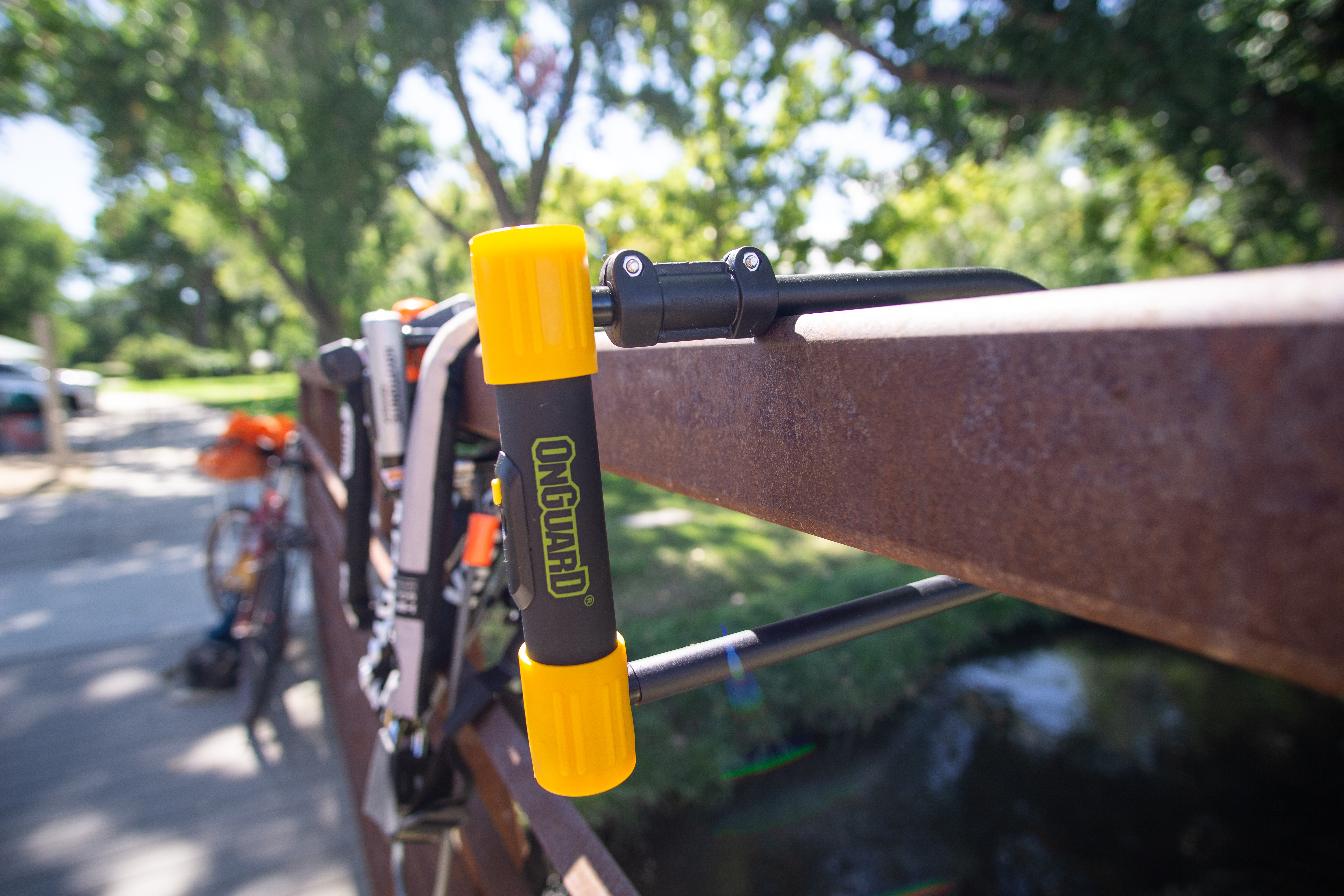
How We Tested Bike Locks
Our expert testing team is composed of experienced cyclists and outdoors-oriented people looking for the best products on the market. Our staff includes former bike racers, recreational cyclists, folks who bike-commute 60 miles a week, and everyone in between — people who care about fit, finish, and function in every product we use.
Many of us rely on bikes for transportation, and some of us own very expensive bikes that we absolutely do not want to get stolen. As such, we’re always seeking out the best bike locks for our personal use and have experience using all types of locks in our daily lives.
Our Expert Testers
This guide is a combined effort with most products tested by lead author Heather Balogh Rochfort, GearJunkie contributor Paul Mandell, and GearJunkie Editor Jeremy Benson.
Tester Paul Mandell has two decades of experience in the saddle as a competitive racer and recreational rider. He completed his master’s degree in exercise science, where he studied the critical power model for cycling. Mandell’s testing experience extends beyond bike locks, and he has contributed his expertise to numerous other guides, including bike lights, bike computers, and bike phone mounts, to name a few.
Jeremy Benson has been cycling for over three decades. An avid mountain and gravel rider and racer and lover of bikes of all kinds, he currently has over 10 bikes in his possession. Many of the bikes he owns also happen to be quite expensive or customized, so he also owns a small fleet of bike locks to keep them safe in varying scenarios. In addition to bike locks, he’s contributed to many other guides, including hitch bike racks, mountain bike shoes, and mountain bike helmets.
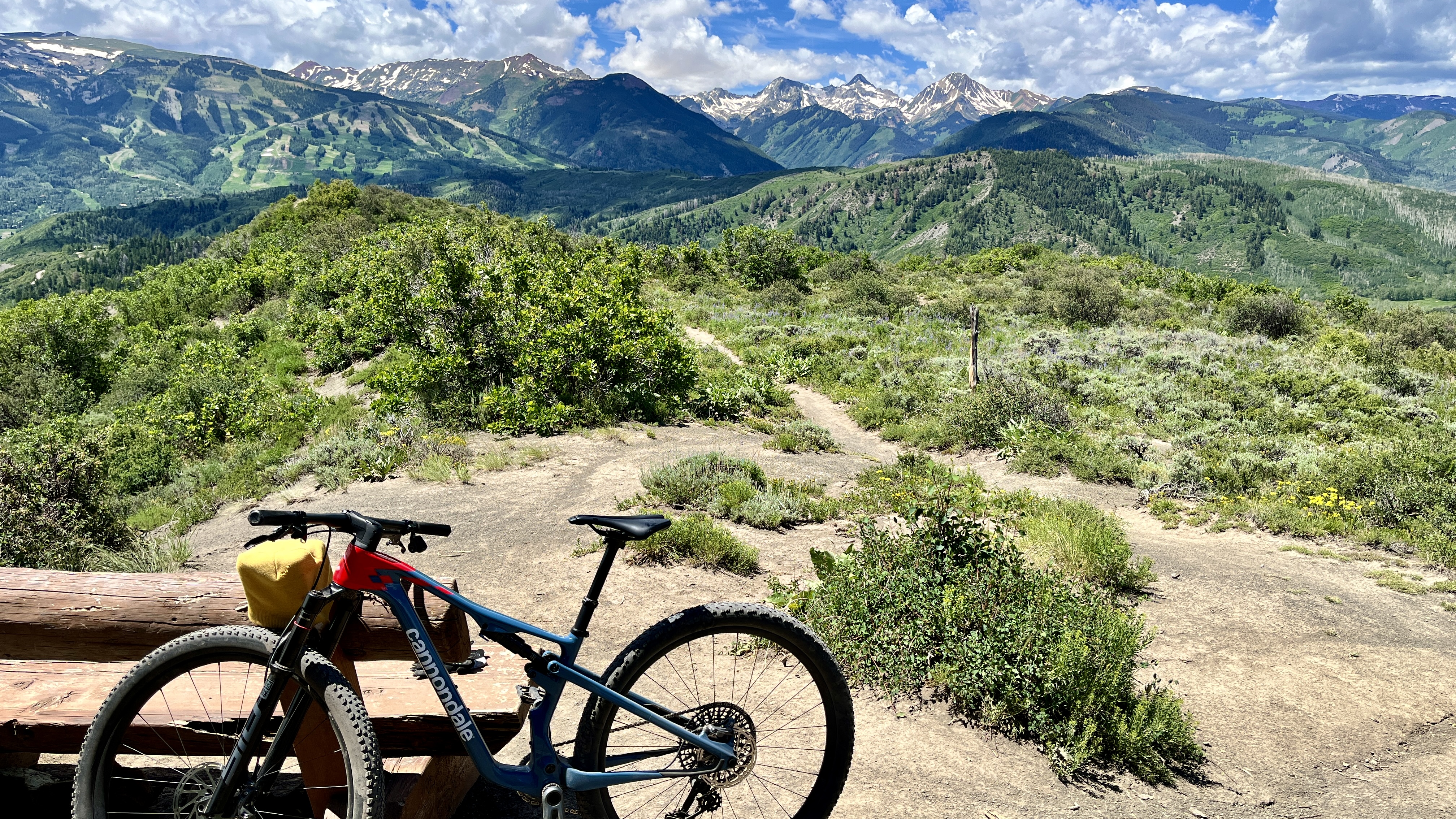
GearJunkie staff writer Heather Balogh Rochfort hopped on her first bike 25 years ago. She started with road bikes but has since expanded beyond, developing a deep love for both gravel and mountain biking. These days, you can find her riding and reviewing bikes in her hometown of Carbondale, Colo. where she explores as much singletrack as possible.
Our Testing Process
We vetted the most popular locks on the market and ordered a selection of different styles — chains, U-locks, folding locks, and cables. We then evaluated them for fit, finish, and function. We carted these locks all over town in messenger bags, backpacks, pockets, or included frame mounts. We locked our bikes to city bike racks, fences, light poles, and hitch bike racks and evaluated the portability, security, and ease of use for each lock when used in real-world scenarios.
We also put some of the manufacturer’s security claims to the test and attempted to break into some of the featured locks to see if they really stood up to attacks. When the smoke and dust settled, we came back with the best options for the different styles of locks on the market today.
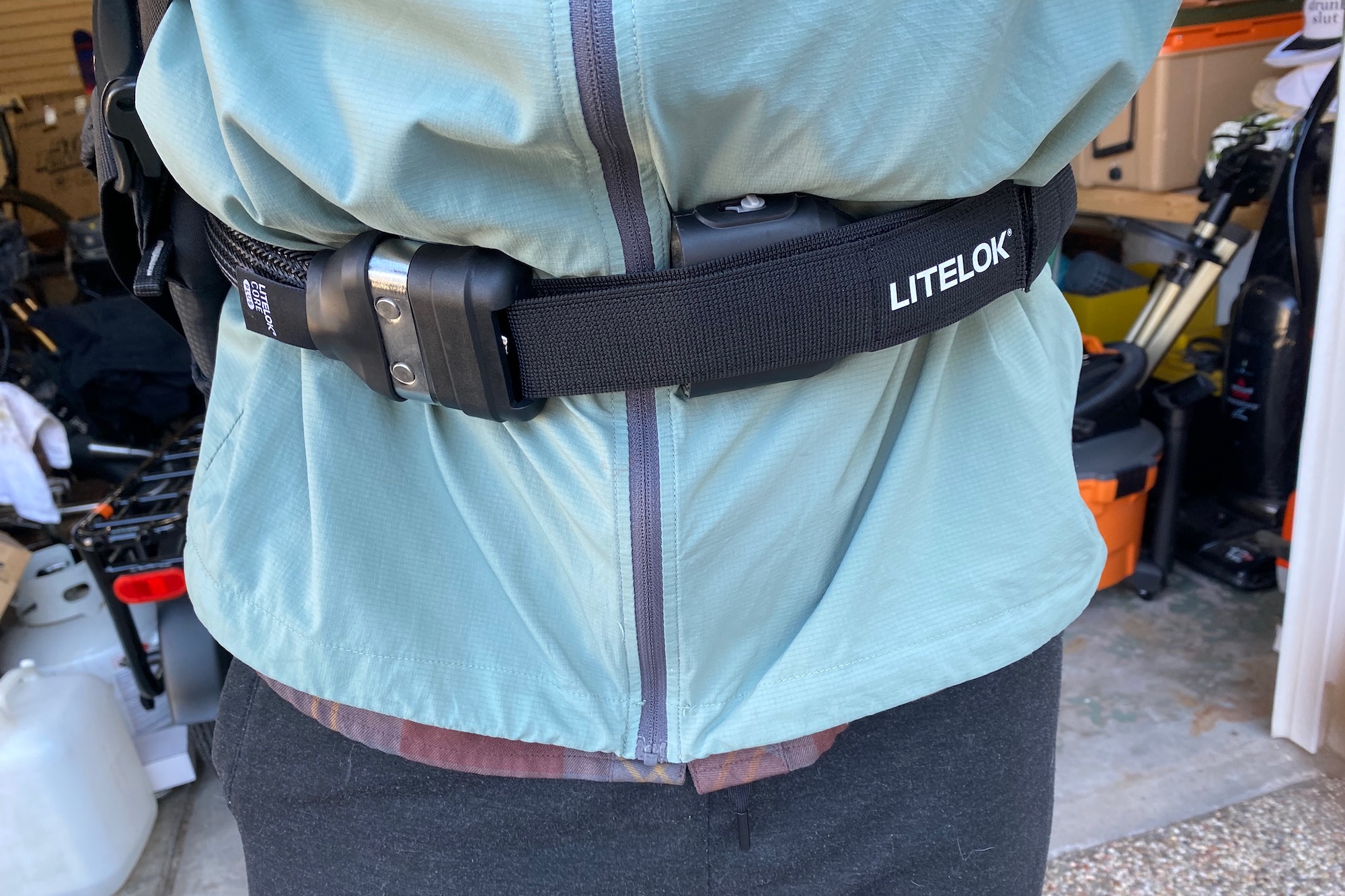
Our Bike Lock Rating System
To fairly compare bike locks across different styles and security needs, we break our ratings into four key categories. These help maintain balance in our scoring and allow readers to see where each lock truly excels—whether you’re securing a commuter bike in the city or your kid’s bike outside the library.
Security
Security is the core of any bike lock review. We assess how well each lock resists common theft methods, including bolt cutters, leverage attacks, sawing, and picking. We look at shackle or chain thickness, materials, locking mechanisms, and third-party certifications (such as Sold Secure). Top-scoring locks provide strong protection and meaningful theft deterrence without compromising usability.
Ease of Use
A lock should be simple and intuitive to operate. We evaluate the locking mechanism, how fast you can secure the bike, and how easily the lock works in real-world scenarios—like crowded racks or quick errands. Keyed vs. combination systems, dial or keyhole quality, and how beginner-friendly a lock feels all factor into this score. If a lock is frustrating to use, most riders won’t use it correctly—or consistently.
Portability
Weight and size matter, especially for riders carrying their lock daily. We measure how easy each lock is to transport, whether it mounts cleanly to a bike frame or fits comfortably in a bag. We also consider bulk, rattling, and how the lock’s shape impacts portability. The best locks strike a balance between security and carry-ability for your riding style.
Durability
A reliable lock should withstand weather, repeated use, and everyday wear. We evaluate construction, coating or sleeves that protect your bike’s finish, and long-term performance of the locking mechanism. We note any rusting, fraying, stiffness, or degradation over time. High-quality locks maintain smooth function and structural integrity through years of rides and rough handling.
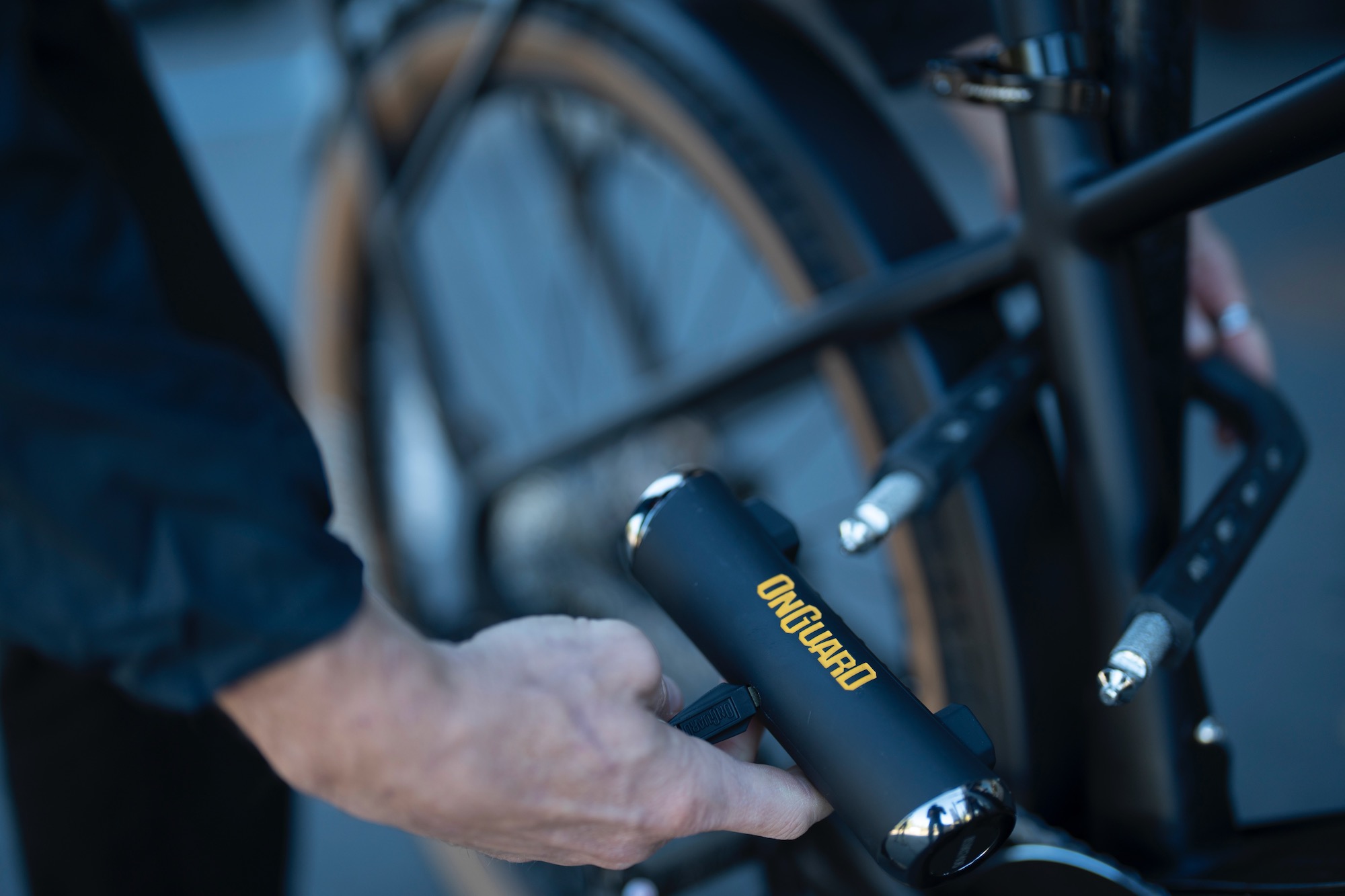
Buyer’s Guide: How to Choose a Bike Lock
If you’ve never had a bike stolen, consider yourself lucky. If you have had your bike stolen, then you know that it is a terrible feeling and can be a significant financial hit. Either way, there are loads of great bike locks on the market to protect your bikes from theft. Whether you need something super portable and convenient for low-risk situations or something virtually unbreakable for high-crime areas, there are options to suit every bike security need.
Styles of Bike Locks
Bike locks traditionally come in four different styles, each with its own benefits and drawbacks.
U-Locks
U-locks (also known as D-locks) are essentially oversized padlocks. They vary in their level of security, but overall, they can be the most secure option. Several models on the market are angle-grinder resistant and carry the Diamond-level Sold Secure rating.
U-locks have a hardened steel U-shaped shackle that fits into a crossbar lock that closes the loop. These can have a locking mechanism on one or both ends of the U shape. If it locks both sides, it usually means that the lock can’t be twisted and must be cut twice to be removed.
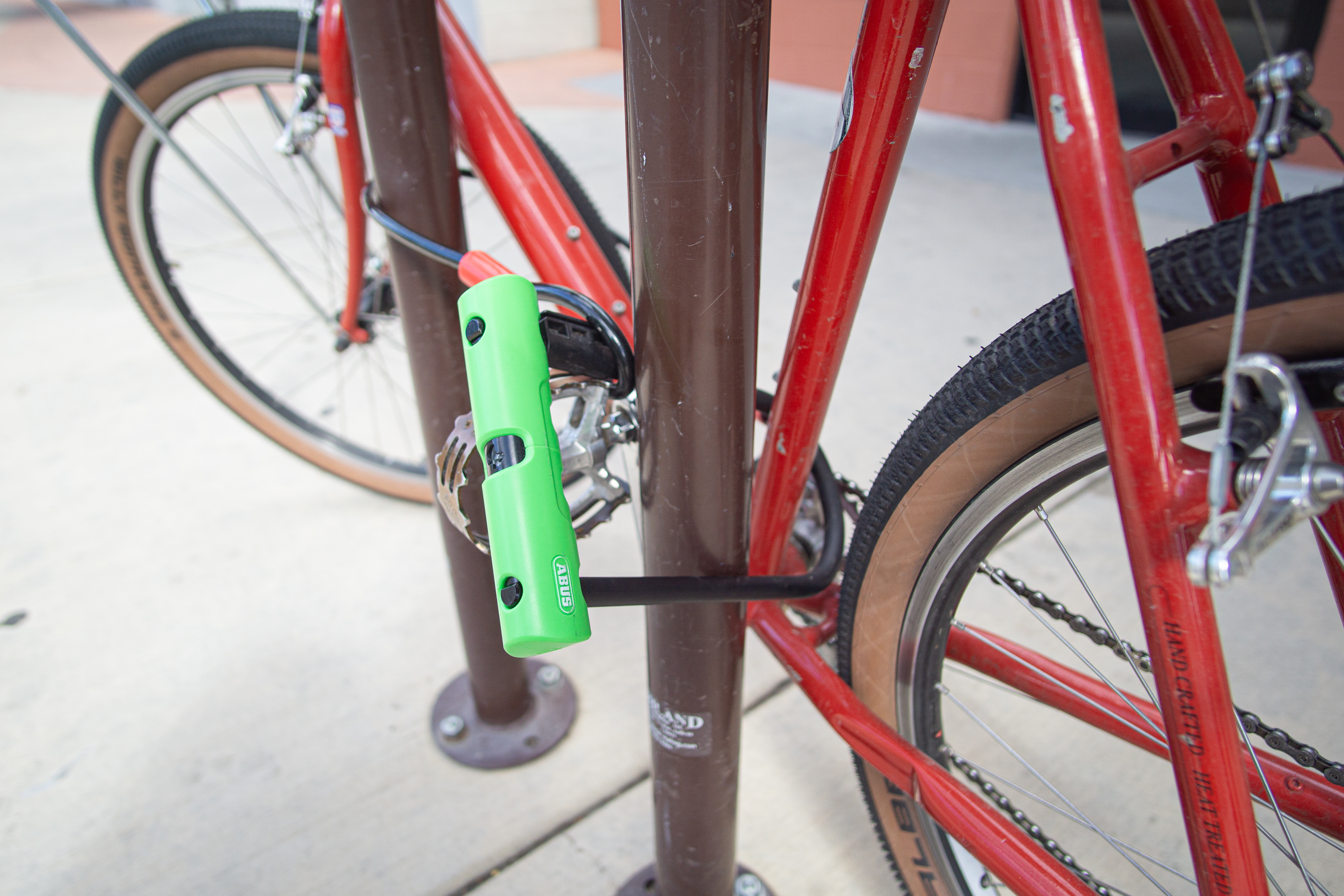
Given their design, U-locks are comparatively a bit limited in terms of what they can lock up. The largest U-locks can usually fit around a bike frame tube, the rear wheel, and a fixed object to lock onto. Smaller U-locks may be limited to fitting around just the frame.
For most folks in most situations, a solid U-lock like the Kryptonite New U will be more than adequate. If the risk of theft is high, then an angle grinder-resistant model like the LITELOK X1, OnGuard RockSolid, or the Hiplok D1000 is a safer and more secure bet to ward off thieves with power tools.
U-locks offer the best combination of security and portability, but you’ll want to ensure that the lock you choose fits your specific bike. The shackle size and, therefore, the size of the locking area varies by model, so that is important to consider when choosing the right lock for your needs.
Folks considering a U-lock may also want to pick up a cable or folding lock to help secure your other wheel and/or bags while you are away from your bike. Or, a combo like the Kryptonite New-U with Cable or the ABUS Ultra 410 U-Lock and Cable will make it easier to lock of your frame and both wheels.
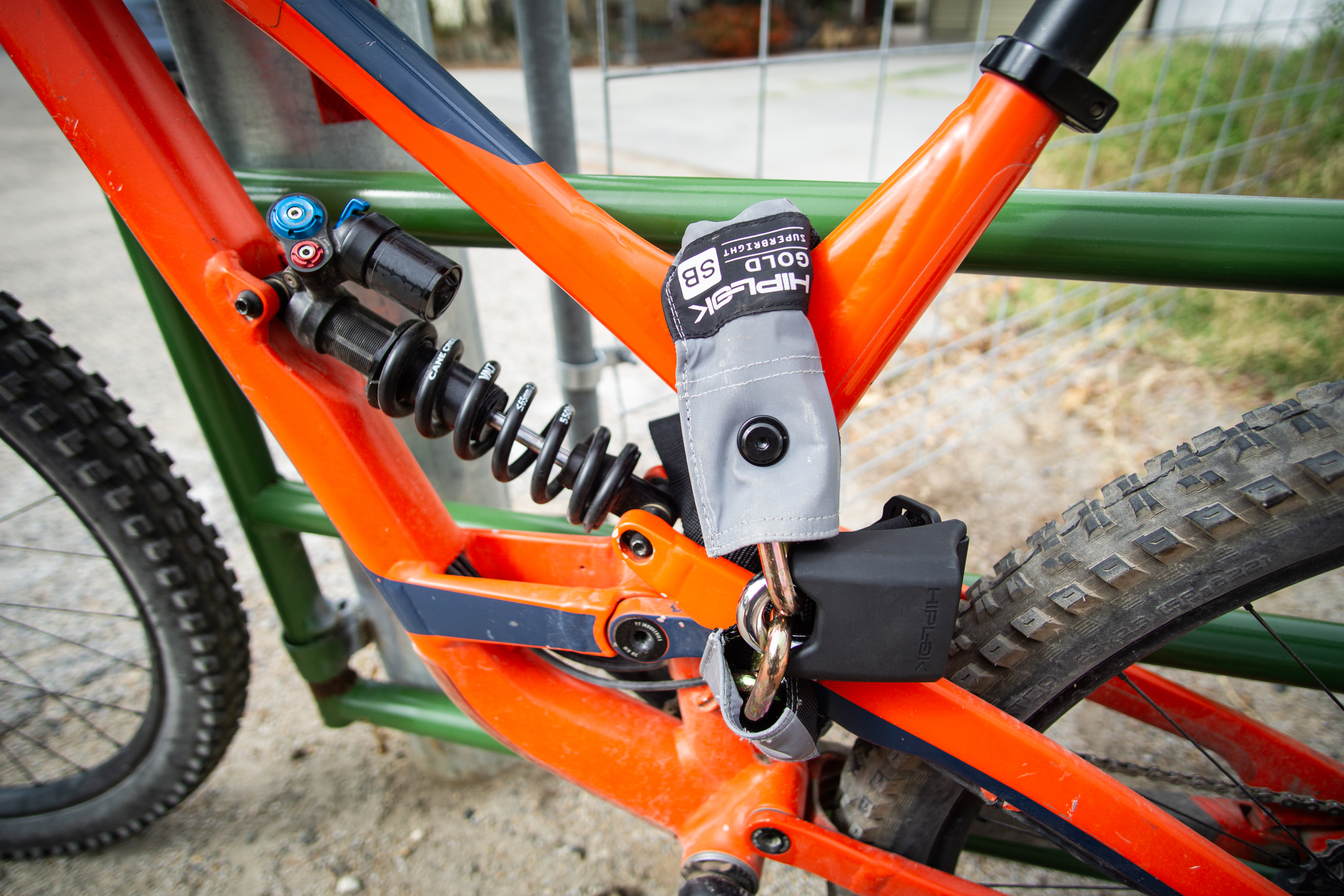
Chain Locks
Chain locks consist of a length of chain with a locking mechanism that secures the two ends together. Some chain locks come with a padlock, and others have a built-in locking mechanism. These locks vary pretty dramatically in terms of security based on the thickness of the chain links and the quality of the locking mechanism itself. They also come in different lengths to suit different needs, from shorter and more portable options like the Sportneer Bike Lock to super beefy 6-foot-long models like the OnGuard Beast 8016L.
Chains also must be cut twice to remove, making them a bit more arduous to compromise but far from impossible. The value of a chain lock is that it can take a long time to cut through some of them and usually draws attention. Chain locks also offer a higher degree of user-friendliness when locking. The flexible nature of the chain itself, along with the length, allows you to lock up more bikes at once or lock your bike to a larger object.
Chains are only as good as their weakest link, so choose one with a strong padlock or locking mechanism. Additionally, some chain locks, like the ABUS 8808C, have a combination lock that isn’t as robust as a padlock or shackle. Padlock-style locks are susceptible to attack with the wrench and cutter methods. Locks like the Kryptonite 1090, which uses a deadbolt, are more secure than padlocks and traditional shackles.
The primary drawback of chain locks is their size and weight, which typically makes them less portable than other styles. For example, the OnGuard Beast 8016L is not only big and bulky, but it weighs over 19 pounds. No one wants to ride around with that, but it’s amazing to leave in the car to lock your bikes on a hitch rack. In contrast, the Hiplok Gold is one of the lightest chain locks we tested at 5.2 pounds, and its innovative belt-carry design makes it pretty easy to take with you.
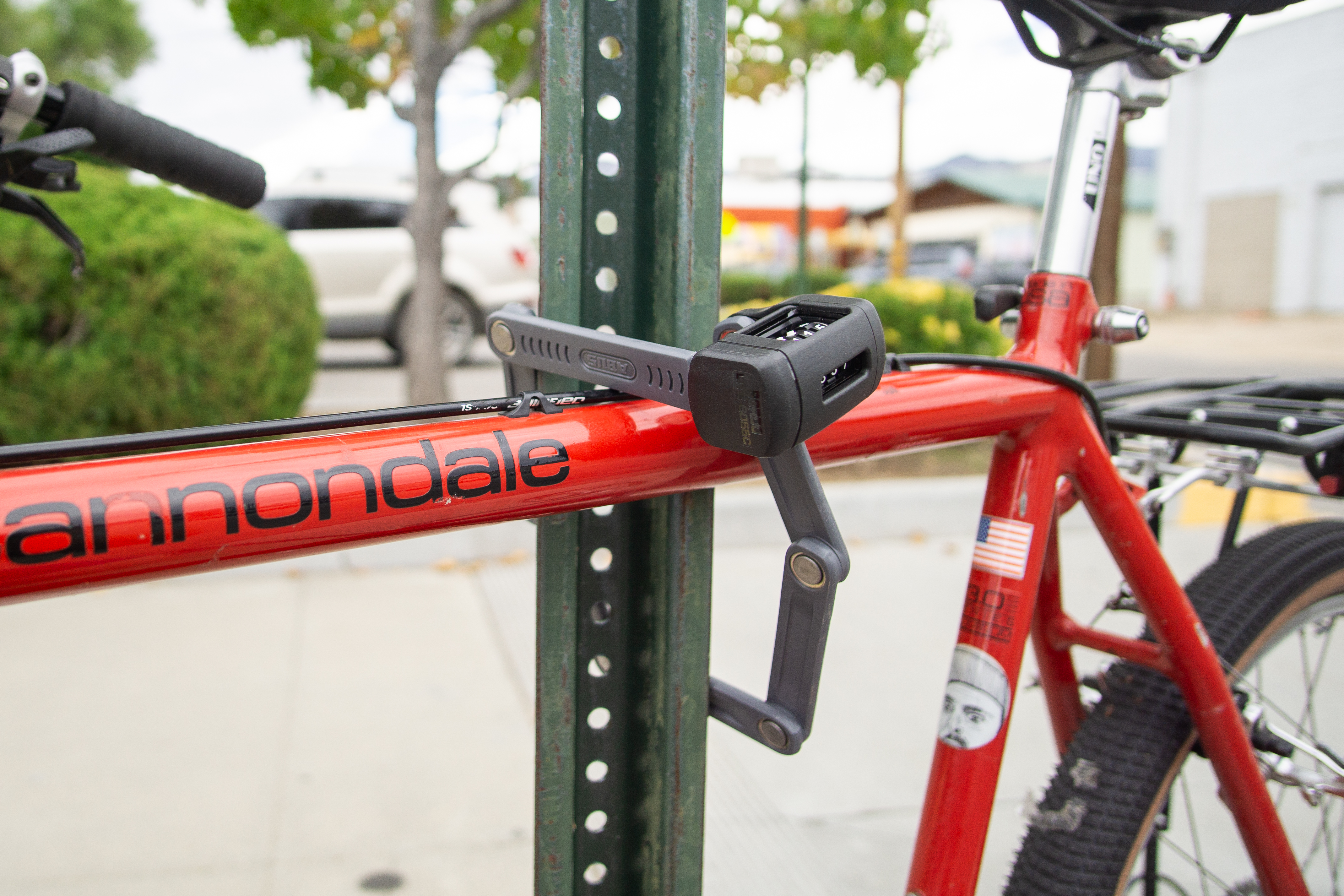
Folding Locks
Folding locks like the ABUS Bordo 5700 and the Hiplok Switch are composed of a set of hardened steel bars that are attached by pivot hinges at each end and a lock that connects the two free ends. These allow roughly the same flexibility and locking area as some chain locks but at a lighter weight and a more easily portable package.
It varies by model, but generally speaking, folding locks are less robust than many U-locks and chain locks, but they shine for their portability and are adequate for medium security situations. The Foldylock Forever is the exception, with a Gold rating from Sold Secure. That said, folding locks don’t stand a chance against a bike thief armed with an angle grinder.
Compared to other styles of locks, folding locks fold into a compact and tidy package. Most come with frame-mount brackets that hold them unobtrusively on your bike until you need them. They can also often fit into a pocket, take up little space in your backpack, or maybe even come with a belt carry clip like the Hiplok Switch.
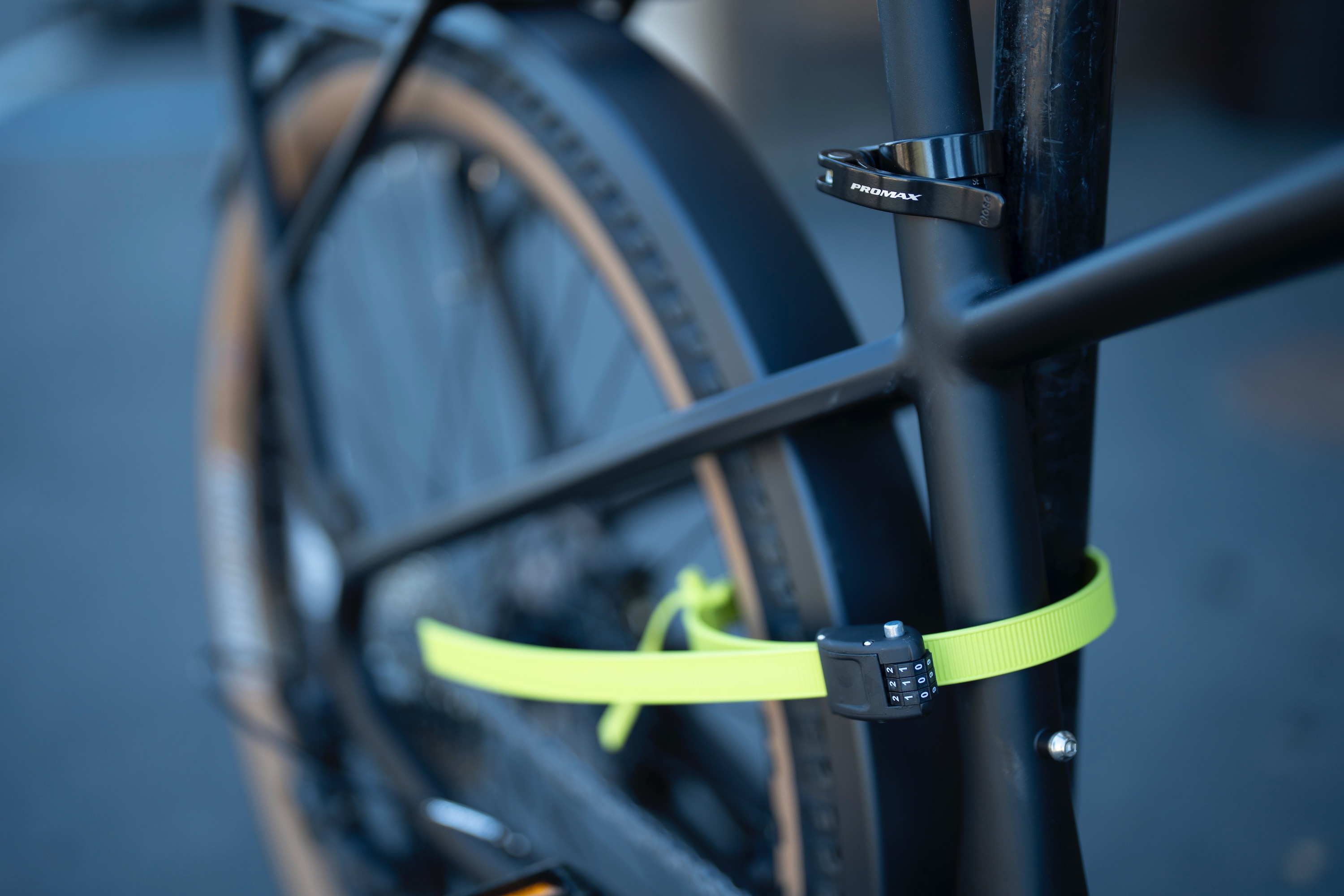
Strap Locks
A relatively new breed of low-security locks resembles large zip-ties with integrated locks. These are intended to deter opportunistic grab-and-go theft in low-crime areas. Typically, these are very lightweight and smaller in size, so they are easy to bring along with you on any type of ride. They can be useful as a standalone lock for a quick stop at the coffee shop or as a supplemental lock for your front wheel or other gear, along with a more robust lock on the frame.
That said, these are among the easiest locks to compromise, so they shouldn’t be relied upon for extended periods or anywhere that bike theft is a common problem. Typically made from thin steel wires covered in a rubberized coating, they can be cut quickly and easily.
The Ottolock Original Cinch Lock is an example of this style of lock. It weighs just 6 ounces and rolls down small enough to fit in a jersey pocket. The convenience factor is very high, but the security level is quite low.
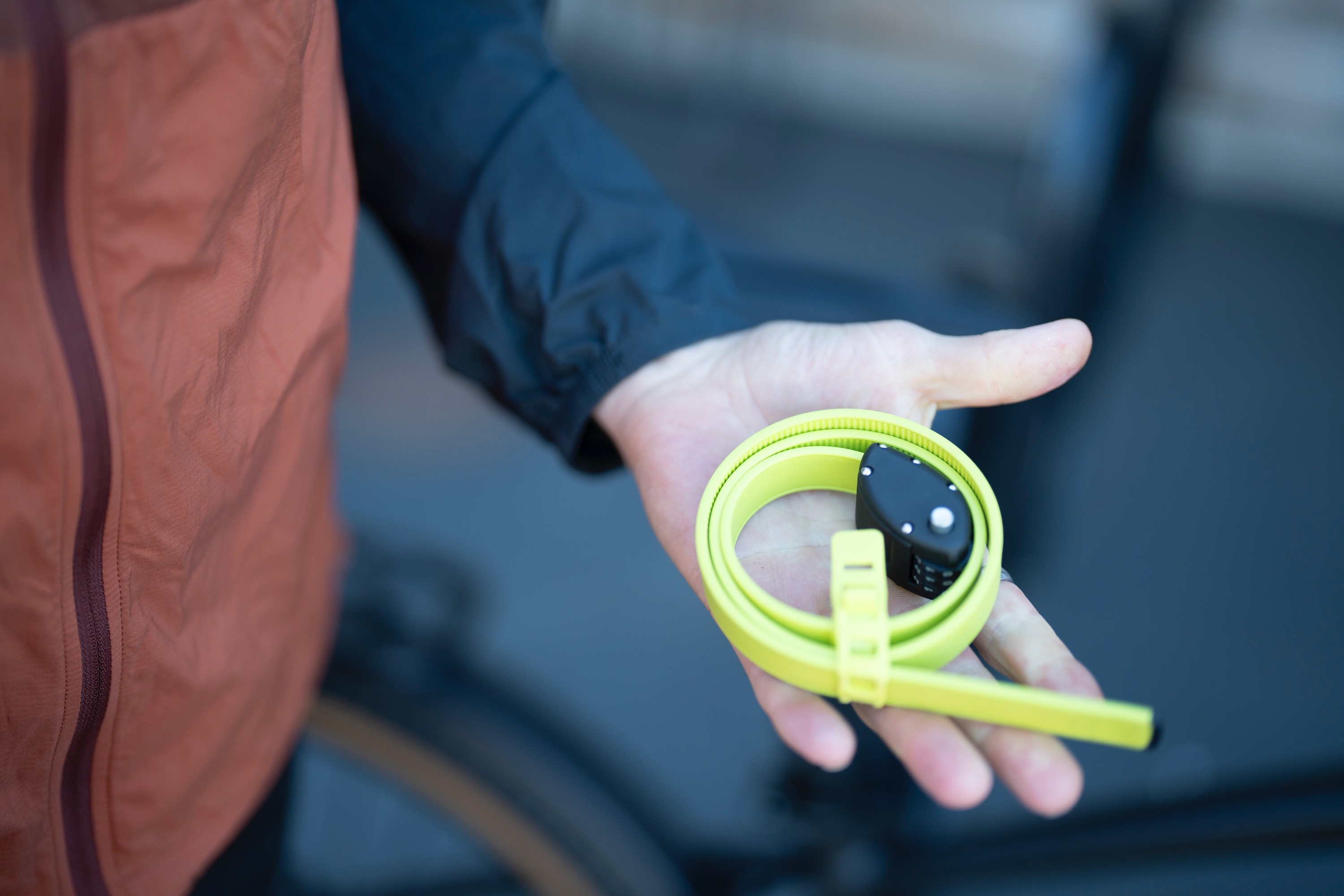
Cable Locks
We here at GearJunkie don’t consider cable locks to be secure on their own, and neither should you. They are only meant as an accessory to your main lock and can be used to lock your wheels or other gear that’s on your bike. That said, they are better than no lock at all, but we recommend other types of locks.
These locks use a braided steel cable that’s attached at each end with a lock. Cables can be cut extremely easily and silently, which makes them the number-one lock we have seen bike thieves seek out when stealing bikes.

Lock Types
Bike locks usually come with either a combination or a keyed lock mechanism. We find that most people gravitate towards one style or the other based on personal preference. That said, broadly speaking, the most secure locks on the market usually have a keyed lock.
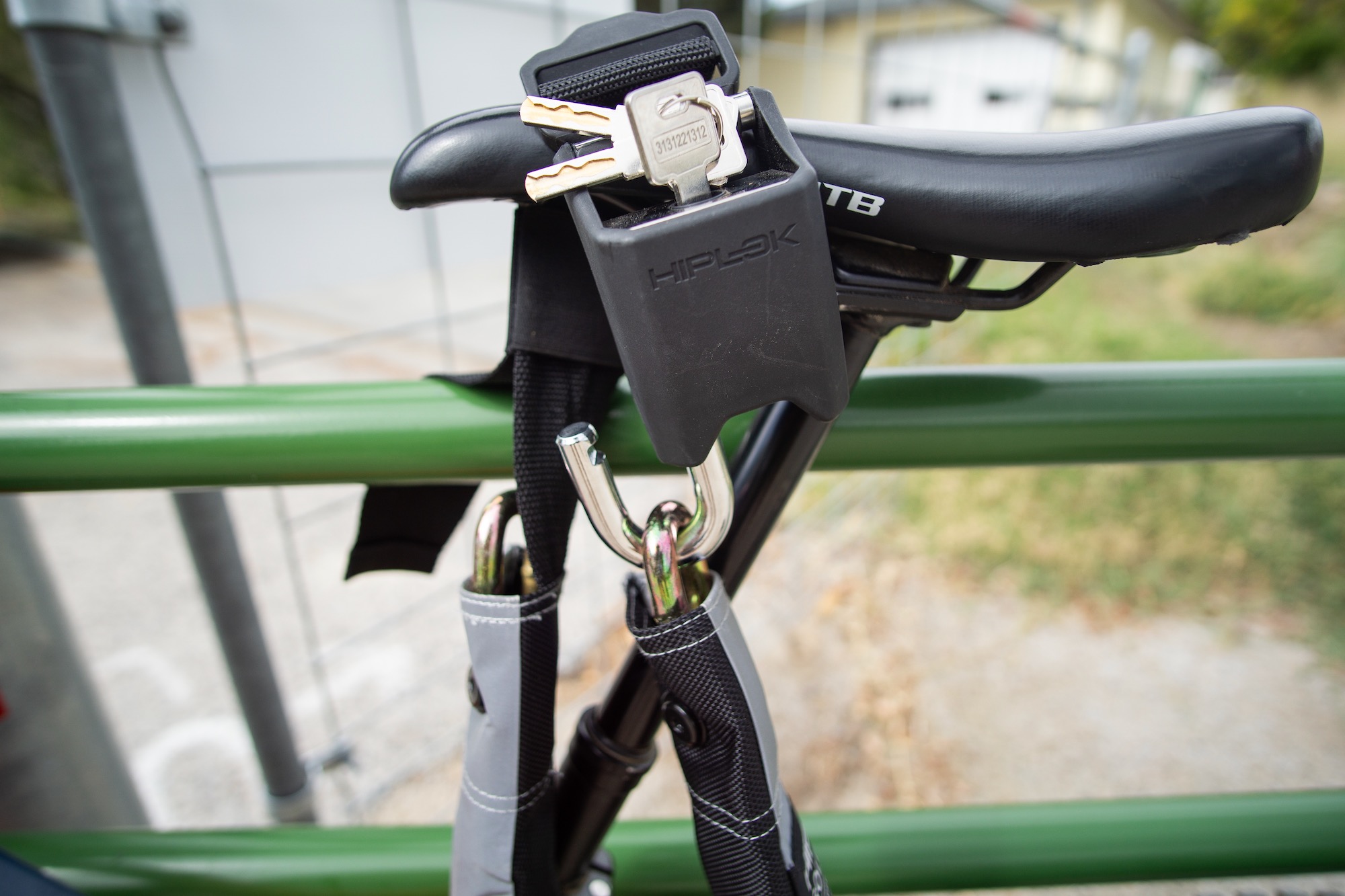
Key
Keyed locks use a key that goes into a lock cylinder and is turned to unlock it. Of course, you need to carry a key with you to use this type of lock, which may be a drawback for some users. Most locks come with multiple keys, so you have extra for different users, keychains, or in case you lose one — or several.
Most keyed locks come with high-security keys that can’t be copied, but you can usually get spares from the brand. The lock cylinders themselves are usually also specially designed to be resistant to picking, drilling, and other forms of brute force damage. As long as you’re comfortable carrying a key around with you, we recommend keys over combinations because they typically are more robust.
Combination
Combination locks are preferred by many people because you don’t need to carry — or keep track of — a key. Just set a combination, and you’re good to go. That said, most combination locks are a bit more susceptible to theft as codes can be cracked, and the locks themselves are often a bit less robust so they can be damaged or broken more easily.
There are exceptions to the rule, of course, as there are many super heavy-duty combo locks available.
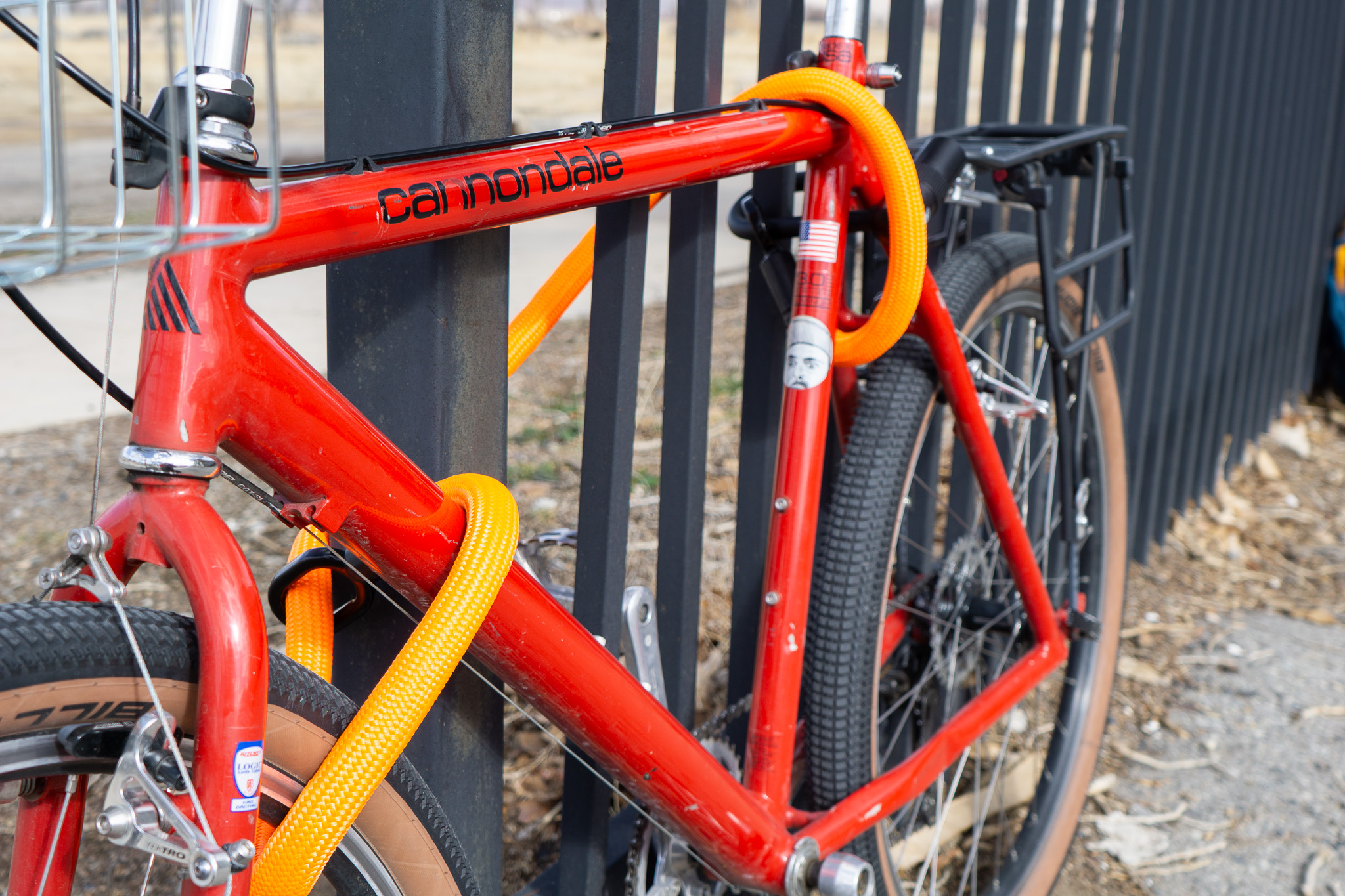
Ease of Use
Each lock style works differently, and finding the one that fits your needs is pretty easy. Most locks are honestly pretty easy to use, but often a certain style may work better for your needs and, therefore, be more user-friendly. When choosing the right bike lock for you, it’s important to consider where you’ll use it, what needs to be locked, what you’re locking to, and how you’ll transport the lock itself. The best bike lock in the world is no good if it doesn’t fit your bike or it’s a pain to carry with you.
When buying a lock, take a good look at how the locking mechanism works, as well as how easy it is to lock and unlock, before deciding which one is right for you. All of the locks featured in this guide scored well in ease of use, but individual preferences may vary. Do bear in mind that combo locks are usually more susceptible to attack than deadbolts and shackles, but offer a slightly easier locking and unlocking situation.
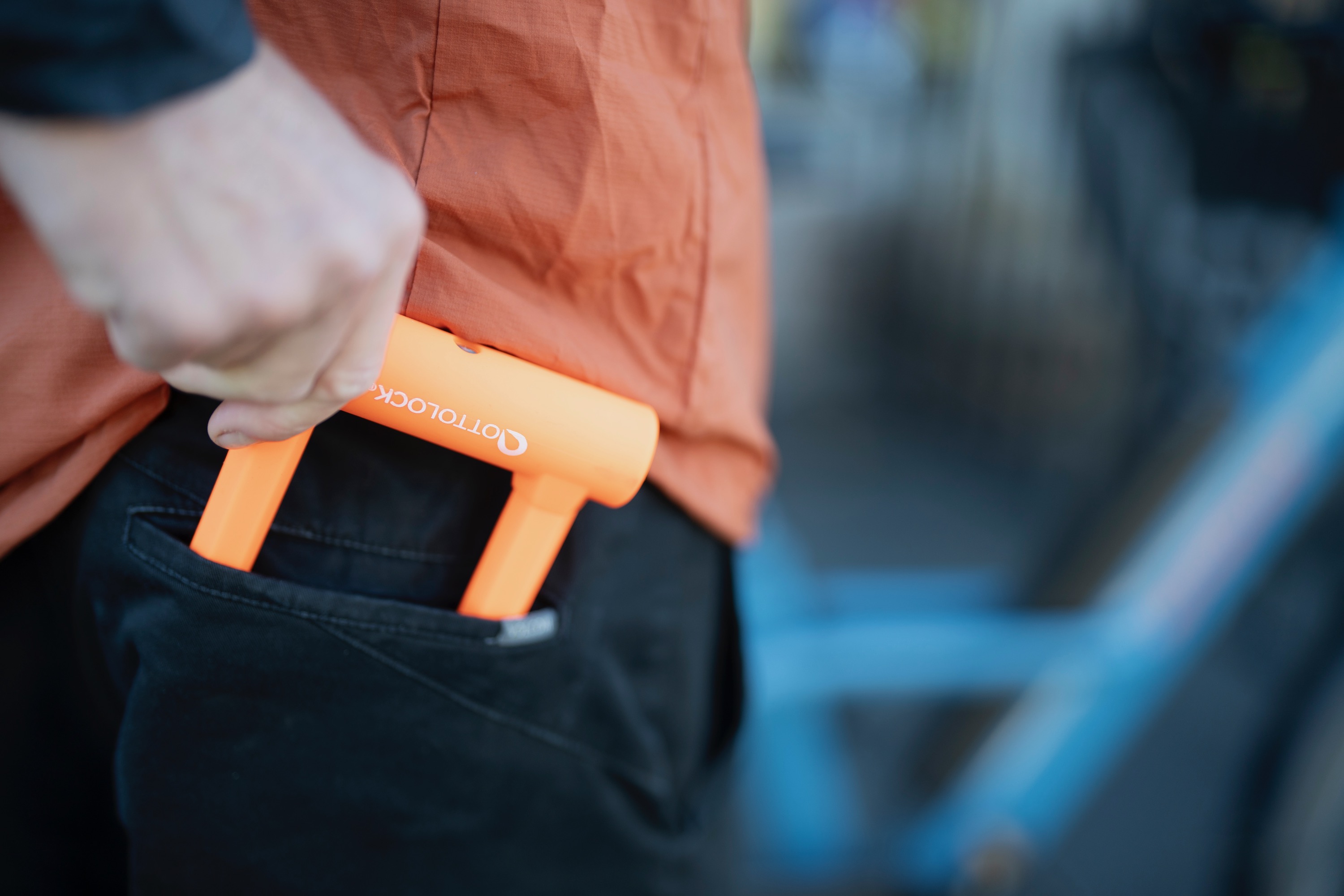
Size and Portability
Locks come in a variety of shapes and sizes, so you’ll want to choose the one that fits your specific needs. This applies to the size of the lock and what you can lock up and lock onto it with, but also how you intend to transport the lock. Portability and security often have a direct relationship, so keep that in mind. Generally speaking, the lighter and smaller the lock, the less robust it is, and vice versa.
U-locks come in sizes that usually can only fit one bike unless they are combined with a supplemental cable. Still, the U-locks we tested top out at around 4 pounds, and they are small enough to fit into a backpack, messenger bag, or, in the case of the Ottolock Sidekick, your back pocket. Some even come with frame mount brackets so you can carry them on the bike. We liked the one that comes with the OnGuard Bulldog.
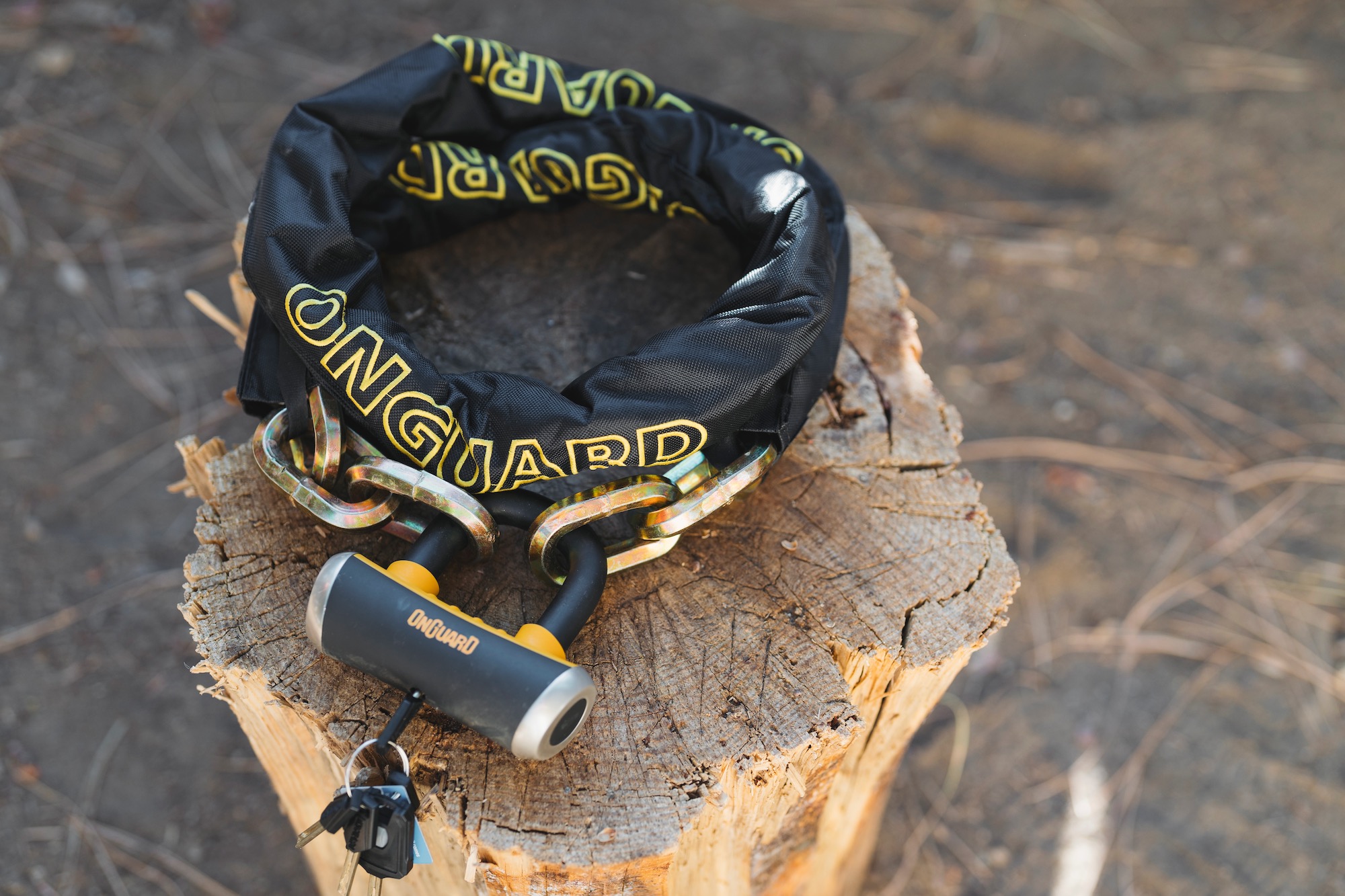
Chain locks come in different lengths, and generally, larger and stronger locks are heavier but more secure. Take the OnGuard Beast, for example. This burly six-foot-long chain weighs a whopping 19.4 pounds. No one wants to carry that anywhere, but it’s awesome for keeping in your vehicle to lock bikes to your hitch rack.
In contrast, the Hiplok Gold weighs just 5.2 pounds and has a carry system to wear it around your waist. It’s not as long or burly, but it’ll have you covered in most situations. Similarly, the LITELOK Core Plus weighs just 4.1 pounds and can be looped around your waist for transport. For littles, we also have the itty-bitty Sportneer Bike Lock that weighs just 1.5 pounds.
Then, there are highly portable folding locks like the ABUS Bordo, Hiplok Switch, and Foldylock Forever. The size and carrying brackets of these locks make them easy to bring with you, even if they aren’t the highest security. The same applies to strap-style locks like the Ottolock Original Cinch — it’s incredibly light and portable, but only really good for low-risk situations.

Security Ratings
Bike locks provide varying levels of security based on their design and the materials used in their construction. Not all locks will protect your bike to the same degree, nor are they intended to. For this reason, it’s important to purchase a bike lock or locks that meet your needs for security based on the risk of theft where you intend to lock them up and the value of your bicycles.
Sold Secure is an independent lock testing facility that rates locks based on their resistance to a bike thief’s most common forms of attack. They have created a rating scale with four levels — Diamond, Gold, Silver, and Bronze — which correlate with the relative difficulty of compromising a lock. The four ratings and their criteria are listed below.
- Diamond: The highest level of security. Diamond-rated locks must be able to withstand dedicated attacks with specialized tools for at least 5 minutes, including 1.5 minutes with an angle grinder. These locks are intended for expensive bikes and extended periods in high-risk areas.
- Gold: A high level of security. Gold-rated locks must be able to withstand attacks with specialized tools for at least 5 minutes (not counting angle grinders). For use in high-risk areas.
- Silver: A moderate level of security. Silver-rated locks must be able to withstand attacks from an enhanced tool list for at least 3 minutes. These locks are intended for use in moderate-risk areas for shorter periods of time or as secondary locks.
- Bronze: A low level of security. Bronze-rated locks must be able to withstand attacks from a basic tool list for at least 1 minute. These locks are intended for use for short periods in low-risk areas to prevent opportunistic theft.
An easy way to know if the lock you are buying has been tested and rated is to look for the Sold Secure logo — most brands advertise the rating. Bike lock brands also do their own in-house testing, and many of them assign a security rating based on their own scale to provide similar information to the consumer. Fortunately, they all seem to be pretty accurate when compared and averaged. Some, but not all of the locks we featured in this article are vetted by Sold Secure.
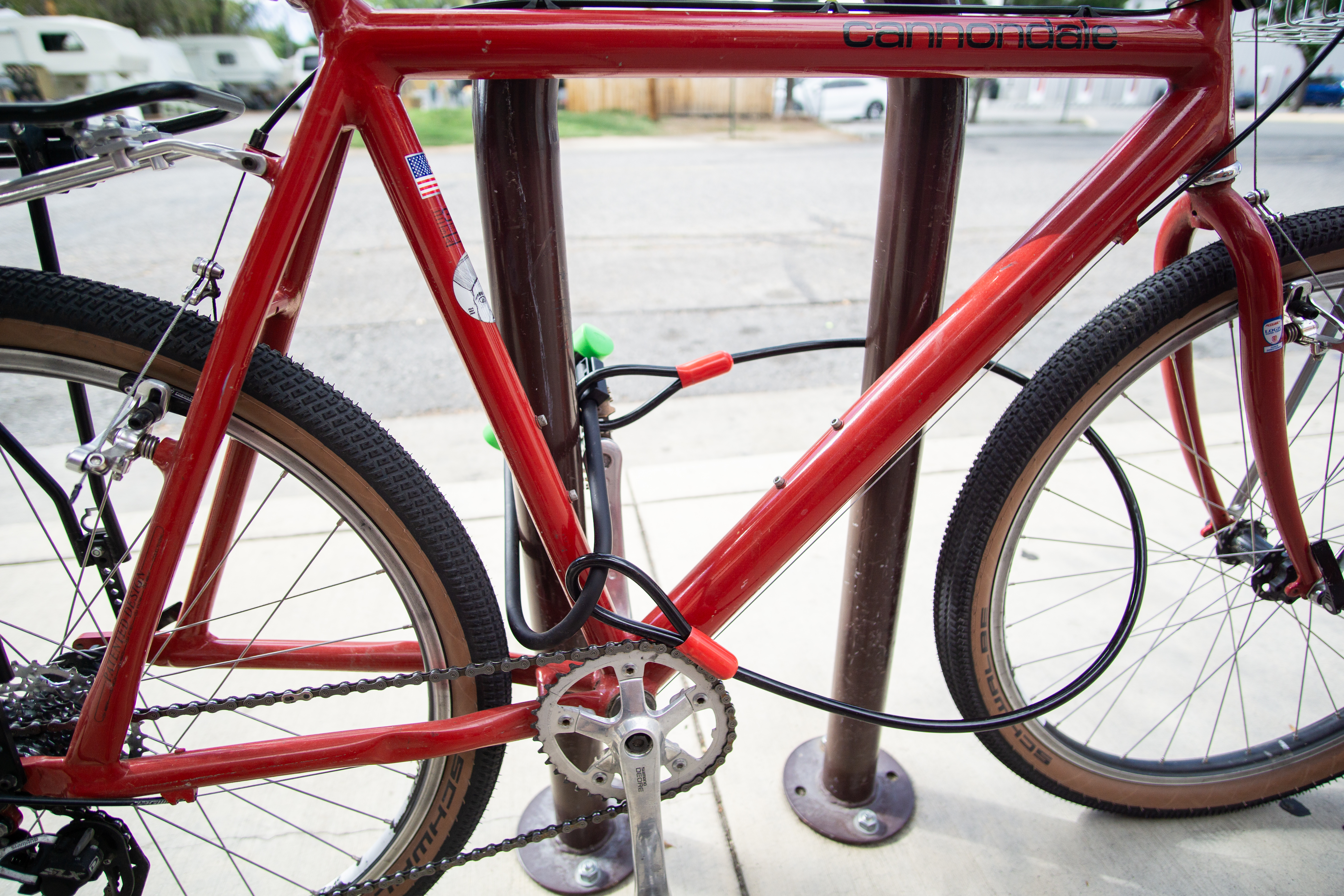
Price & Value
In general, as the price increases, so does lock security. To find the right value for you — the perfect balance of price and security — consider the value of your bike(s) and the risk of theft where you’re locking it up. No one wants their bike stolen, but obviously, if you have an expensive bike, it will fetch a higher price, and thieves are more likely to risk cutting a flimsy cable lock or even going after a sturdier D-lock with an angle grinder. Remember, any lock can be cut eventually, and security comes from the amount of time it takes to break a lock.
Budget
Just because you don’t have a lot of money to spend doesn’t mean you can’t get a quality bike lock that should keep your bike secure (most of the time). While budget-friendly bike locks aren’t rated as high by Sold Secure — usually Bronze or Silver — they definitely work better than nothing and will deter opportunistic theft or short attacks from most tools short of angle grinders.
The Sportneer Bike Lock ($17) is easily the cheapest bike lock we tested. It is nowhere near as secure as any other lock in this guide, but it’s a good lock to help kids get started with using locks on their own. The OnGuard Bulldog ($33) is one of the least expensive models we tested, but this U-lock still boasts a Silver-level Sold Secure rating. This bike lock is easy to use, comes with a great frame mount bracket, and gets the job done without emptying your wallet. Similarly, the Ottolock Sidekick ($39) and Sidekick XL ($59) offer a similar level of security in a more refined-looking package.
The Kryprotnite New-U Kryptolock STD with Cable ($78) is another great value product. It includes the Sold Secure Silver-rated U-lock and a cable to loop through your front wheel. This is a nice package that provides more locking flexibility than a U-lock on its own.
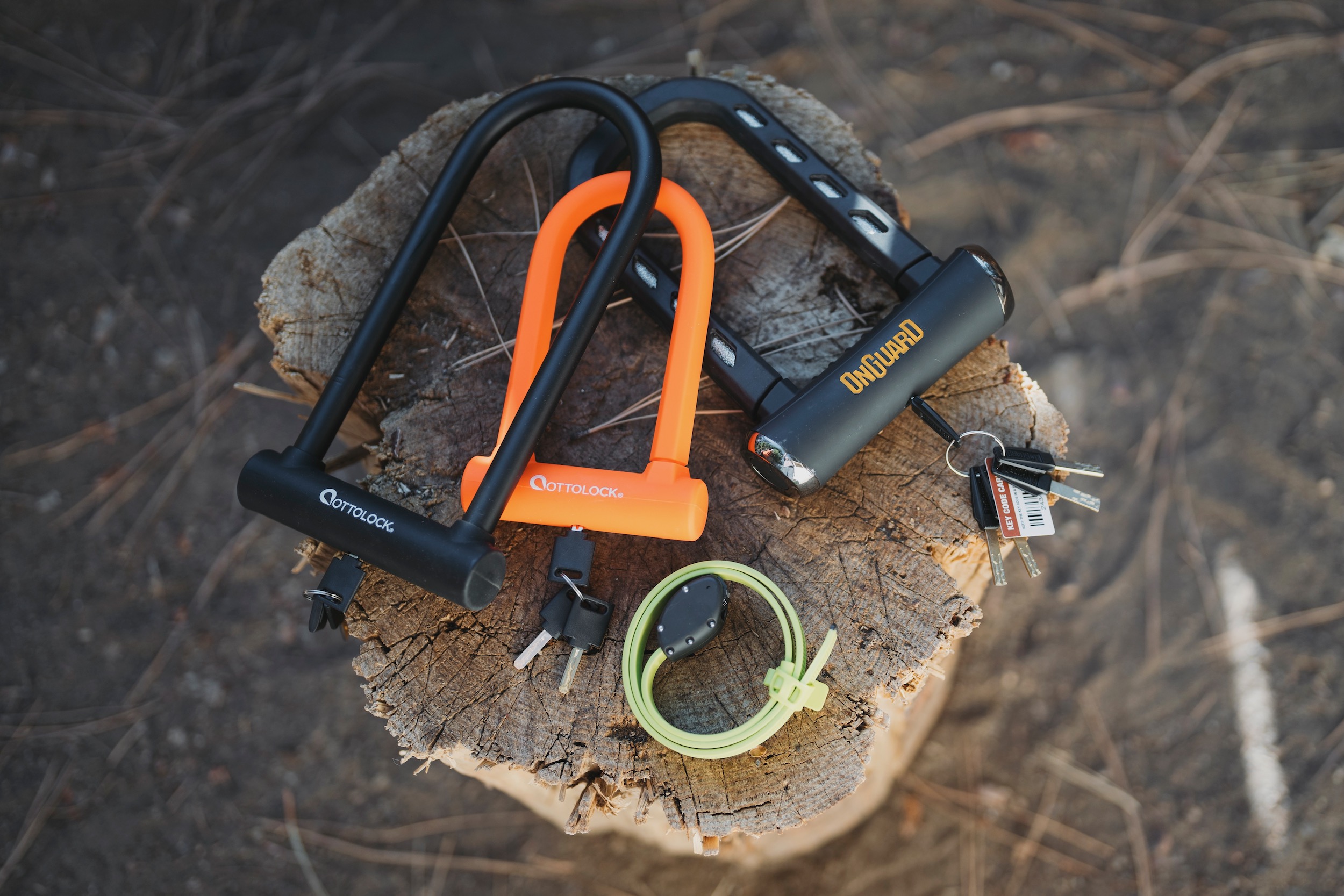
Mid-Tier
As we climb the price ladder, the security level and rating typically follow, or we also see some more specialized or complex designs. While not the absolute toughest lock on the market, the Foldylock Forever ($135) is the most secure folding lock on the market. The 6.5 mm-thick steel plates and robust pivots resist attacks from all common forms of theft short of angle grinders.
A little higher in price, the Hiplok Gold ($130-140) boasts a Gold-level Sold Secure rating, so it brings a higher level of security. At 5.2 pounds and with a convenient wearable design, it’s easily the most portable chain lock on the market. It’s not impervious to angle-grinder attacks, but it’s a great option for all but the highest-risk areas.
Just a small step up in price, the LITELOK X1 ($200) boasts a Sold Secure Diamond rating with an angle-grinder-resistant design. Similarly, the LITELOK Core Plus ($180) is the only Diamond-rated wearable lock that we know of. This lock can loop around your waist, while also providing a larger locking area than most U-locks.
Premium
Above around $200, we find ourselves in premium bike lock territory. Locks in this price range are typically the most secure, with some carrying the Diamond-level Sold Secure rating. These locks are usually very robust and often include special materials and features that command a higher price tag. While these locks are expensive, they are still much cheaper than replacing your bike.
The Hiplok D1000 ($300) is a good example. This super burly U-lock was one of the first anti-angle grinder models that is capable of fending off very determined thieves armed with power tools. It includes a graphene composite coating on its thick, hardened steel shackle. This coating is very resistant to the cutting wheels on angle grinders, and it requires numerous wheels and lots of time to break this lock.
The OnGuard RockSolid ($270) is another super-tough, Diamond-rated U-lock that will burn up many grinder wheels with its diamond-ceramic-coated steel shackle.
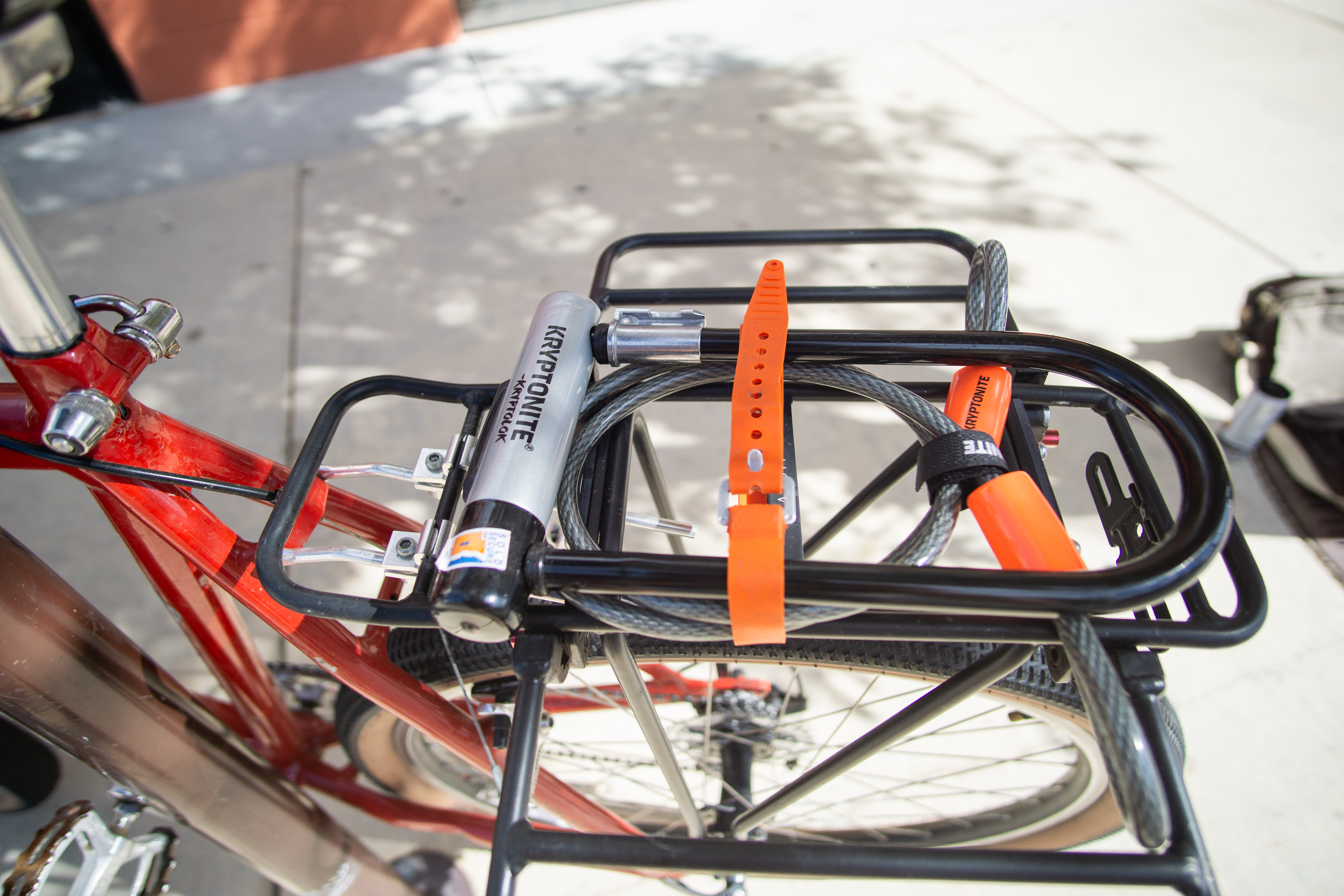
Frequently Asked Questions
Lock your bike through one of the two triangles made by the frame with a high-security lock. Using a cable or chain lock, also lock the wheels to the frame or to the post you are locking up at.
Never lock your bike using the seat post, handlebars, or just a wheel, as the bike can still be easily stolen leaving those parts behind.
No. With enough time and the correct tools, any lock can be cut. Even the most expensive angle grinder-resistant locks can eventually be compromised, it just takes a long time and the thief needs to be carrying enough cutting wheels to do it. While they aren’t unbreakable, it takes long enough that some of them might as well be.
Locks like the Hiplok D1000, the OnGuard RockSolid, and the LITELOK X1 are some angle-grinder resistant models that can be cut, but it will take long enough that most thieve will porbably move on.
Depending on the situation, you can lock your bike frame to its wheel for a very short time. If it is an extended period of time, you should find a pole, tree, gas meter, light pole, street sign, or other fixed object to lock to, even if it means you have to walk a block or two.
In our experience, U-locks can be made to be the most secure. With the use of special coatings on top of thick, hardened steel shackles, U-locks can resist all types of attacks from the tools that bike thieves use, including angle grinders. Still, the locking areas of U-locks is relatively small, so other parts of your bike — wheels, seat, handlebar, etc. — may still be susceptible to theft.
It depends on numerous factors, but chain locks are the next most secure option. The burliest chain locks on the market will turn most thieves away, but they usually are easier to cut with an angle grinder than a super-expensive U-lock.
Both combination locks and key locks can work well for securing a bike, but they serve slightly different needs. Combination bike locks are popular for convenience — there’s no key to carry or lose. They’re also especially user-friendly for kids, students, and casual riders making short stops. Plus, they’re easy to share among family members and are a great choice for low-risk areas like school bike racks, gyms, or quick errands.
Key bike locks, on the other hand, typically offer better security. High-quality U-locks and chain locks with keys use stronger internal mechanisms that are harder to pick or tamper with. For riders parking in cities, high-theft areas, or leaving a bike unattended for long periods, a keyed U-lock or chain is usually the safer choice.
The best way to choose is to match the lock to your environment. For low-risk, everyday use, a combination lock is usually sufficient and much easier to use. For urban riding or high-theft areas, a key-based U-lock provides far stronger protection. Some riders use both: a key lock for the frame and a lightweight combo lock for securing wheels or accessories.

The Best Bike Pumps of 2025
We tested 16 models from top brands like ToPeak, Blackburn, Silca, Bontrager, and more to find the best bike pumps.
